Learn French with Lara - Have fun learning French !

How to talk about Christmas in French – 100 useful Christmas words in French – Christmas celebrations in France
- French for teenagers , Podcast , Video
Welcome to my blog ! May I invite you to download the FREE sensational COLOR-CODED guide to conjugating 24 of the most common verbs in French ! Click here to download 😀
Welcome back to my site ! May I invite you if you have not done so yet to download the FREE sensational COLOR-CODED guide to conjugating 24 of the most common verbs in French ! Click here to download 😀

Oh oh oh ! Here is the joyous and festive season of Christmas coming soon. Learn all about the vocabulary of Christmas in French as well as about Christmas traditions in France and other countries
How to say ‘Merry Christmas’ and ‘Happy New Year’ in French?
First of all we say,
- Joyeux Nöel – Merry Christmas
- Bonne année – Happy New Year
At Christmas we can,
- souhaiter un joyeux Noël – wish a merry Christmas
- souhaiter une bonne année – wish a happy New Year
You can also,
- envoyer une carte de Noël – send a Christmas card
- acheter ses cadeaux de Noël – buy your Christmas present
But the most important thing is to
- passer Noël en famille – spend Christmas as a family
- ouvrir ou déballer les cadeaux de Noël – open or unwrap Christmas present
But when shall we open our Christmas presents ? on the 24th or on the 25th ?
- le 24 décembre – the 24th of December
- la veille de Noël – Christmas’ eve
- le réveillon de Noël – Christmas eve ‘s celebration
- le 25 décembre – the 35th of December
- le jour de Noël – Christmas day
- la fête de Noël – Christmas party
Well, since Christmas is the celebration of Jesus Birth and he was born on Christmas day, and the presents are a reminiscence of the presents brought from the wise men, it should be on Christmas day
- les trois rois mages – the three wise men
- les 3 cadeaux des rois mages; or, encens et myrrhe : the three wise men presents : gold, frankincense, and myrrh
Christmas decorations in French

Before we get to the celebrations comes the important part of decorating your house for Christmas, and of course the king of the decorations is very famous …
- le sapin de Noël – Christmas tree
- les guirlandes – garlands
- les boules de Noël – Christmas bauble
- le sucre d’orge – candy cane
- la guirlande lumineuse – Christmas-tree lights
- une pomme de pin – pine cone
- une étoile – star
- un ange – an angel
- un bonhomme en pain d’épice – gingerbread man
- le calendrier de l’avent – Advent Calendar
- le pull de Noël – Christmas jumper
- le miracle de Noël – Christmas miracle
- la magie de Noël – Christmas magic
- les marchés de Noël – Christmas markets
Did you know that in the old days, Christmas trees were only decorated with apples ! However, in the middle of the 19th century, a severe drought deprived the Vosges region (in eastern France) of apples. A glassblower then had the idea of reproducing the shape of apples, but in red glass. Very quickly, the tradition spread in France and went beyond its borders.
- une pomme – an apple
To decorate your door, you could have
- une couronne – wreath
Outside your house you could have, if lucky
- de la neige – snow
- un Noêl blanc – a white Christmas
- des illuminations de Noël – Christmas lights
Hanging from your fireplace, you could have
- un bas de Noël – Christmas stocking
- la cheminée – the fireplace
- la collation du père Noël – Father Christmas tea
- la hotte du père Noël – Father Christmas’ bag
To decorate your table, you could have
- des bougies – candle
- des décorations de Noël – Christmas ornaments
‘La collation du père Noël’ is the snack offered to Father Christmas and his deer or donkey to thank him for coming all the way to bring us our Christmas present.
- le père Noël – Father christmas
- le renne du père Noël – Father Christmas’ reindeer
The Christmas crib in French ❅ The nativity scene

The all important Christmas crib or Christmas crèche needs to be ideally seated under the Christmas tree and it contains …
- la crèche de Noël – Christmas crib or crèche
- Joseph – Joseph
- le petit Jésus – Baby Jesus
- la vierge Marie – Virgin Mary
- le berceau de Jésus – Jésus crib
- l’âne – the donkey
- le boeuf – the ox
- la paille – the hay
- les bergers – the shepherds
- les moutons – sheep
Where do the Santons ‘little saints’ come from ?
The Santons or little Saints are these characters made out of clay coming from Provence. Their story is, in Provence, small colorful clay figurines called santoun (“little saints” in Provençal) appeared to recreate a crib in the private space of the homes. Inspired by an Italian tradition, this custom spread quickly in France. Today, the santon tradition is still very present in Provence and many santon fairs are organized there, the most famous being in Marseille.
- les santons – Christmas characters
In my native village, it was the tradition to build the best crèche for Christmas outside our house and every Christmas villagers toured the village to have a look at the different crèches and would give a prize to the most beautiful. On their tour, they could rely on the hospitality of the villagers to offer them …
- du vin chaud – mulled wine
- pain d’épice – gingerbread
- du boudin de Noël -Christmas white sausage
Christmas traditions in French

Before you celebrate Christmas, it is a common tradition to attend the Christmas mass in your local church :
- l’église – the church
- la messe de minuit – midnight mass
- la chorale – the choir
- les chants de Noël – Christmas songs
In Belgium, on the 6th of December, we have the tradition of receiving the visit of Santa Claus who distributes presents to the well-behaved children and Père Fouettard to reprimand the bad ones.
- Saint Nicolas – Santa Claus
- le traineau de Saint Nicolas – Santa Claus’ sleigh
- des friandises – sweets
- des gâteaux – cakes
- le père fouettard – bogey man
It is also a tradition to eat a Yule log on Christmas day as well as drink a bit of bubbly
- la bûche de Noël – Yule log
- une bûche glacée – ice cream yule log
- des marrons glacés – candied chestnut
- des marrons chauds – roasted chestnut
In France, people do not usually eat turkey but a vast range of Christmas food, some include
- du saumon fumé – smoked salmon
- des huîtres – oysters
- des fruits de mer – seafood
- le homard – lobster
- le chapon – capon
- le faisan – pheasant
- la dinde – turkey
- du champagne – champagne
- des truffes au chocolat – chocolate truffles
The 13 Christmas desserts from Provence

In Provence, the tradition is to have 13 desserts for Christmas, there are …
- des noix – nuts
- des figues séchées – dried figs
- des raisins secs – sultanas
- des dattes – dates
- de la pâte de coing – quince paste
- divers fruits confits – candied fruits
- une fougasse – the French equivalent of Italian focaccia bread
- du nougat blanc – white nougat
- du nougat noir (avec des amandes grillées et du miel caramélisé) – black nougat (with toasted almonds and caramelized honey)
- du nougat rouge (aux pistaches et à la rose) – red nougat (with pistachios and rose)
- des calissons d’Aix-en-Provence (confiserie de Provence composée de melon confit, pâte d’amande nappée de glace royale) – confectionery from Provence made from candied melon, almond paste topped with royal icing
- des oranges , clémentines ou mandarines – oranges, tangerines
- un melon d’eau – a watermelon
After Christmas, come of the course the New Year and its traditions
- la nouvelle année – the New Year
- le gui – mistletoe
- s’embrasser sous le gui – kiss under the mistletoe
- la fête des rois – Epiphany
- la galette des rois – the Epiphany’s cake
- la Saint-Sylvestre – le Jour de l’An
- le jour de l’an – New Year’s day
Christmas expression in French

- Noël au balcon, Pâques au tison – if Christmas is mild, Easter will be cold
It means that if Christmas is mild enough that you can go outside and celebrate on your balcony (balcon), you will spend Easter by the fireplace.
What will you do for Chritsmas? Write in the comments what you will do in your country and what you will eat ! And I wish you all a Merry Christmas and happy New Year !
Jingle bells in French
Here is Jingle bells in French, ‘vive le vent’
‘Vive le vent’ fill in the gap exercise in French
Listen to the song and then fill in the gap with the words in French seen in this article 👍
Watch the video of this lesson : Christmas in French
➢ Do you need help with your French GCSE speaking exam ? ☞ Download your free GCSE French speaking booklet here
French GCSE online course
➢ Do you want to try a free online French GCSE course ? ☞ Try the demo version here
French GCSE videos
➢ Do you want to watch more videos like this to help you learn French for your French GCSE exam ? ☞ Check out the French GCSE Videos here
French GCSE idioms
➢ Do you want to learn new French idioms and know how to use it in your French GCSE speaking or writing exam ? ☞ Check out the French GCSE idioms here
French GCSE podcasts
➢ Do you want to join my French podcast and learn French on the move ? ☞ Check out my French podcast here
➢ Do you want to visit my youtube channel ? ☞ Check out Learn French with Lara Youtube channel here
➢ Go and check out my Facebook page ► Learn French with Lara facebook page
More about Lara

Lara is a French and English teacher with over 20 year experience in languages. She gives private lessons of French and English in Les Sables d’Olonne, France where she lives and in videoconferencing via zoom. Her style is relaxed and her sense of humor is legendary. « I can help you take your French further and realize your full potential »
To book a French class with Lara ► Simply contact me here
Would you like to visit my French website to help the French learn English ☞ Apprendrelanglaisrapidement.fr
Happy learning !

Don't miss your free 19 page French GCSE VocaBULARY booklet ✅
with audios 🎧 to learn the correct pronunciation Sign up to discover my sensational 19 page French GCSE Essential Vocab e-book📕
- To make revising French for GCSE a doddle A must-have reference to keep to help you with your Speaking and written French 🗣️
- Understand the most common Edexcel topics in one easy sum-up 👀
- Simply sign up to my newsletter and I will send it to you for free
I hate spam and will therefore not communicate your details to anyone.
Bonjour Lara, C’est sympa de lire Noël raconté aux non francophones 🙂 et en plus, c’est joliment fait et très clair ! Je ne connaissais pas la décoration du sapin avec des pommes… comme quoi, on a beau être français, il y a des manques parfois dans nos propres connaissances ;-p Quant au vin chaud, je crois qu’il dépasse cette période festive et que partout où il fait froid, on en consomme 😀
Bonjour Lara, Bravo pour ton article qui est très complet et interactif ! Nous sommes doublement collègues (prof de FLE et BP) alors je vais te suivre avec beaucoup d’intérêt (même si mon public est hispanophone). Longue vie à ton blog !

Hi, I'm Lara your french teacher
Do you need to know some vocabulary for everyday conversation ? Are you a French GCSE student and would you like to learn some sentence starters ready to use in your French GCSE speaking or writing exam to get top mark at your French GSCE exam ?
Then subscribe to my newsletter and I will give you the sensational
FREE French GCSE essential booklet
To make learning French vocabulary a piece of cake !
A must-have 19 page reference : all the essential vocabulary of
useful general topics in French such as :
☞ Family and friends
☞ Your region
☞ Travel and holidays
☞ Ordering at the restaurant
☞ Future plans and ambitions
☞ The Environment and the international dimension
☞ Based on the Edexcel modules 1 to 8
☞ Free PDF to download and keep
Audios 🎧 and Quizlet links included, to learn vocabulary in a fun way ✅
I hate spam and will not give your details to anyone.
LEARN TO CONJUGATE 24 FRENCH VERBS in all tenses WITH THIS COLOR-CODED E-BOOK for free
Sign up to download this FREE Ebook

Thank you for visiting Learn French with Lara
The sensational 'nail the french conjugation table'. learn how to conjugate easily thanks to this color-coded method all 80 most common french verbs .
Christmas in France: Facts About French Christmas Traditions
Here are some facts about Christmas in France.
- In some parts of the North and Northeast of France, Christmas is celebrated on December 6th. This is the feast-day of Saint-Nicholas, and le Pere Noel (Father Christmas) brings the children sweets and small presents.
- On Christmas Eve (December 24th), French children traditionally placed their shoes by the fire and awoke on Christmas Day to find them stuffed with small gifts, and the branches of the family’s Christmas tree full of fruits and nuts and small gifts.
- Most French children open their Christmas presents on Christmas Day, but many French adults don’t. They wait until New Year’s Eve.
- In the past, many French people attended Midnight Mass on Christmas Eve, and many still do in the present day. After the service, they would have a feast at home or in a local restaurant. This meal is called le réveillon , and it is made up of a starter of snails, oysters, seafood or smoked salmon, a main course of roast goose or turkey, and served with lots of wine.
- Even in households who don’t attend church, the main Christmas meal is usually eaten on Christmas Eve. Great care is taken to make the table look festive, and special ornaments are often used as decorations.
- In French custom, Saint-Nicolas is assisted by Father Spanker or the Whipping Father (Père Fouettard). Dressed in black, Father Spanker decides which children have been good and deserve their Christmas presents, and which have been bad and deserve a spanking.
- Many French families give money to public servants such as binmen and postmen as a way of saying thank-you for the work they have done during the year.
- French Christmas markets are very popular and usually take place in late November and during the month of December. Two of the most famous are the Strasbourg Christmas Market (which has been running since the 16th century) and the Lille Christmas Market
- Christmas crackers aren’t pulled at French Christmas meals.
- Many French people visit a circus during the Christmas period.
- The Christmas tree is the main form of Christmas decoration in most houses. Traditionally, they were decorated with apples, ribbons and paper flowers. Although the custom of decorating trees in France at Christmas time can be dated to the 1300s, the tradition really took off in the late 1830s.
- The French often hang mistletoe above the doors in their homes to bring good fortune for the coming year.
- A Yule log is a traditional Christmas dessert in France, usually made from chocolate sponge cake with chestnuts.
- Some French families exchange their gifts on January 6th, the Feast of Kings, or the Feast of Epiphany, the twelfth day of Christmas. Traditionally, a pastry (the gallette des rois – cake of kings) is eaten on this day, with a charm hidden inside. The person who finds the charm is named King or Queen and must wear a paper crown and must provide the cake for the next party.
- A nativity scene is a common Christmas decoration in French houses. Characters include the Baby Jesus, Mary, Joseph, and other more unusual figures (or santons), such as bakers, fruit and vegetable sellers, local noblemen, a blind man, a woman selling fish, a scissors grinder and a roast chestnut seller. The scenes are often displayed until February 2.
- Mainly in the south of France, traditionally families burnt a wine-soaked log on their fire from Christmas Eve until New Year’s Day. This was meant to bring good luck. Nowadays, most people eat a chocolate Yule log instead.
- Merry Christmas in French is Joyeux Noël. Father Christmas is le Père Noël and Christmas tree is le sapin de Noël.
- In Lyon a Festival of Lights takes place in early December. The buildings of the city are lit up and the streets are decorated with Christmas lights.
What next? Learn more about France .
Leave a Reply Cancel reply
Your email address will not be published. Required fields are marked *
This site uses Akismet to reduce spam. Learn how your comment data is processed .
Amazon Affiliate Disclaimer

You are using an outdated browser. Upgrade your browser today or install Google Chrome Frame to better experience this site.
- French »
- Library »
- French reading exercises »
Noël en France - Christmas in France
How is Christmas celebrated in France? How are Christmas Eve and Christmas Day different in France than in the US or UK? Our bilingual article - with audio! - has everything you need to know - just click any phrase to see the English translation as well as links to lessons on the relevant French grammar.
Christmas Links
- French Advent calendar
- Un conte de Noël (A Christmas Carol)
- Bûche de Noël : recette
- Conseils pratiques pour profiter des marchés de Noël
- Decorating the Christmas tree in French
- French Christmas vocabulary
- Kwiziq interactive readers are great way to practice your reading skills without getting lost. Click on any phrase for the English translation and related French grammar lessons , that you can study now or add to your Notebook." data-tooltip-theme="tooltipster-generic" data-tooltip-interactive="true">What's this?
- More French reading practice
Click any word in the text to see its translation and related grammar lessons.
- Sites and Monuments in Paris
- Sites and Monuments in France
- Things to do in Paris
- Things to do in France
- ACCOMMODATION
- RENTING A CAR
- CHEF SERVICE
- CONCIERGERIE SERVICES
- TRAVEL TIPS
- TRAVEL LUGGAGE
- Arrondissements
- Monuments & Landmarks
- Secret & Offbeat Paris
- More about Paris...
- Île de France
- More Regions of France...
- Aix-en-Provence
- More Cities...
- Castles and Palaces
- Cathedrals and Churches
- Gardens and Parks
- World Heritage Sites
- Villages of France
- Autumn / Fall
- Mardi-Gras / Carnival
- April Fools' Day
- Bastille Day
- All Saints' Day
- More Holidays and Celebrations...
- National Anthem
- Gallic Rooster
- National Day
- Motto of France
- Motto of Paris
- Coat of Arms
- French President
- Le Croissant
- French Cheese
- French Wines
- Christmas Food and Recipes
- French Nursery Rhymes
- France geography
- FUN QUIZZES
- MOVIES AND MUSIC
- FRENCH LANGUAGE
- BOOKS BY FRENCH MOMENTS
- BOOK RECOMMENDATIONS
- The Secrets of the Eiffel Tower
- The Gems of Paris
- Office desks and chairs
- Travel suitcases
- LEARN FRENCH WITH PIERRE
- THE STORY SO FAR
- WORK WITH US
- THE NEWSLETTER
- HOW TO SUPPORT US
- PHOTO USAGE POLICY
15 French Traditions of Christmas You Should Know!
Last Updated: 14 December 2023
How do the French celebrate Christmas? I’m glad you asked it… for there is much to say about one of my favourite topics! Did you know that the French traditions of Christmas play an integral part in celebrating the birth of Jesus in France?
Well, the festive season consists of many favourite customs such as the Christmas tree, the chocolate bûche, the Père Noël and the great Christmas Eve dinner. Follow me on this cultural journey and learn more about France’s Holiday season!
In this post, we’ll be covering 15 top French traditions of Christmas.
What are the French Traditions of Christmas?
Many European countries, including France, consider Christmas the most important time of the year. Over the centuries, the celebration of Christmas has evolved according to the traditions inherited from Christianity and paganism.
Thus, some of the French traditions of Christmas have emerged while others have been forgotten.
The various traditions of Christmas in France
France, being a country of passage between Northern Europe and the Mediterranean, has adopted various Christmas traditions. The traditional Christmas in Provence is inherently different from that in Alsace. This is also reflected in Christmas gastronomy.
The globalisation of Christmas
However, with the development of globalisation since the end of the Second World War, there has been a standardisation of Christmas traditions in France. The most striking example is the appearance of Santa Claus, the American Père Noël , in French society. The big fat man dressed in red has dethroned the traditional gift distributors. Who remembers Père Chalande or Bonhomme Hiver ?
The great influence of Germany
Another country that has had an important influence on the French Traditions of Christmas is Germany. Alsace, a Germanic province by history, was the springboard for developing Germanic Christmas traditions in France. This is the case for the traditions of the Christmas tree and Christmas markets.
The French Traditions of Christmas start with Advent
Advent calendars.
Advent Calendars ( calendriers de l’Avent ) are, of course, a treat to eager French children in anticipation of Christmas. However, the original versions contained pious images, toys and chocolates filled with modern-day ones. At Christmas, the local postman or firefighter would knock on every door, selling calendars for the coming New Year. The French people call these post office calendars “ Almanach du facteur ”.
Alongside the calendar is the decorated wreath. With its four candles, this is another French tradition of Christmas.
Advent wreaths
The Advent wreath (couronne de l’Avent) consists of fir and pine tree branches. It is traditionally knotted with beautiful red bows and decorated with pine or fir cones. Four candles top the Advent wreath. They symbolise the four Sundays leading up to Christmas. People then lit a candle on each Sunday preceding Christmas.
Did you know? The cathedral of Strasbourg displays one of France’s largest Advent wreaths in the nave.
Read more about these French traditions of Christmas: Advent in France .
The Christmas Tree in France
The Christmas tree is one of the most famous French traditions of Christmas. It has become an iconic figure of Christmas since its origins in the 16th century.
For decorating the Christmas tree (sapin de Noël), French people have a wide choice of:
- glistening tinsel,
- blinking fairy light,
- without forgetting a star at the top.
This article on the French Christmas Tree will tell you when and where the tradition started and how it became a significant part of the holiday festivities.
In France, the Christmas tree first appeared in Alsace in 1521. The French called it “ sapin de noël ” or “ arbre de noël ”. The tree, covered in red apples and lights, symbolised the venue of Christ, ‘the light that illuminates the world’.
A fir tree is the best choice because they do not lose their leaves during winter, which doubles as a symbol of hope and eternal life. It is a more secular tradition than that of the Nativity. And thus more appreciated by protestant countries such as northern Germany and Scandinavia.
Read more about the French traditions of the Christmas tree and Christmas decorations .
From Saint Nicolas to Père Noël
“ Père Noël ” (Father Christmas) is Santa Claus in France. Like in any place celebrating Christmas, the French Père Noël wears:
- a red suit and hat
- with white fur trimming
- with a broad black belt around his waist.
- tall and large,
- with rosy cheeks and nose,
- bushy eyebrows,
- a white beard and moustache.
His big brown sack carries lots of toys . Santa will deliver them in every household at midnight, using his sleigh pulled by reindeer.
Saint Nicolas and Père Fouettard
Saint Nicolas (Sinterklaas) inspired the character of Santa. The Patron Saint originally distributed presents to German and French children on 6 December. Père Fouettard (the Bogeyman) is Saint Nicolas’ counterpart. The French represent him covered in coal marks and dressed all in black.
He whips/spanks misbehaved children, just as Saint Nicolas rewards the good ones. With the transformation of Saint Nicolas into our modern-day Santa, Père Fouettard has somewhat disappeared altogether. In fact, he has given way to other characters, such as elves and reindeer.
Saint Nicolas is the central character of celebrations in Flanders, Lorraine and Alsace, as well as in Austria, Germany, Belgium and the Netherlands. When the Dutch migrated to the United States in the 19th century, they took the traditions of Saint Nicolas ( Sinterklaas ). The character gradually evolved into Santa Claus.
The fireplace of Père Noël
On Christmas Eve, French children used to fill their shoes with carrots and treats for Père Noël’s donkey and leave them by the fireplace.
More recently, the fireplace has been replaced by the Christmas tree. On Christmas night, Père Noël is said to travel the world. He would stop at every house. And climb down through the chimney to leave presents for every child who has behaved themselves through the past year. Sometimes, Père Noël’s donkey is substituted by seven magical reindeer who pull his sleigh, which is, in fact, an American tradition.
On Christmas morning, children run to the Christmas tree to see what Santa has left under it for them. Often, presents are opened on the evening of 24 December, after the Christmas Réveillon dinner or after the midnight mass.
Read more about Santa Claus .
The Christmas Presents
The presents offered to each other at Christmastime represent Saint Nicolas’s caring attitude toward children. They are also symbolic of the gifts the three wise men offered Jesus on 6 January (at Epiphany ) when they arrived at the stable.
Until the 1960s, children in France received an orange and a small gift for Christmas. They were placed in a stocking. Colourful wrapping paper and the tradition of buying more expensive gifts developed in line with increased American influence after the Second World War.
The Nativity scene
The Gospel of Luke recounts the story of Christ’s birth in a stable. His mother, Mary, wrapped him in cloths and laid him to sleep in the stable’s manger. Created around the 13th century, this tradition started spreading among Christians. Nativities (with life-size statues of the characters) and plays have been displayed in public places for centuries.
The Birth of Jesus
In the 4th century, the date of 25 December was decided upon as the birth date of Jesus. Since then, every year on 25 December, a figurine representing Jesus has been placed in the nativity. (some nativities have it already present, though it is positioned upside down until Christmas Day). The first nativity known to man dates back to the 6th century. Writings of that period describe the Christmas celebrations as centring around the nativity: “ ad praesepe ”, in the church of St. Mary in Rome.
The first Nativity scenes
In 1223, St. Francis of Assisi created the first living nativity with people from his church in Greccio. Villagers played the characters. The role play even included live animals!
St. Francis put a consecrated host in the nativity to represent the baby Christ, although a live infant later replaced it. Little by little, the custom spread. Apart from Provençal nativities and live ones, there are also Baroque, Neapolitan, and Comtoise nativities (from Franche-Comté) as well as theatre nativity scenes (which were presented in the town hall square of Paris for 17 years).
A variety of Nativity scenes in France
During the banning of street nativities throughout the French revolutions (closing of churches and suppression of the midnight mass), French households started reproducing the scene in their own house in miniature versions with clay figurines. This was when the Provençal Nativity began to develop. It has now become an essential tradition in the region. Contrary to the traditional nativity, the Provençal nativity mingles biblical characters (Mary, Joseph, the donkey and the ox, the three wise men) with typical Provençal villagers (the town crier, the poacher, the old man and woman: Grasset and Grasseto, the washerwoman, etc…).
Read more about the Nativity Scenes in France and Nativity scenes in Provence .
Christmas Eve in France
The Réveillon is the big dinner French people share with their family on 24 December.
The menu varies according to the region. But the family always has to sit down together and enjoy a variety of the most delicious dishes.
Christmas is a time for celebration; thus, the French indulge in luxury food and delicatessen.
The Réveillon dinner can continue for up to six hours in some families, and it is a very sacred tradition to the French. Eating at the table for a long time is also a social custom in France. It is also intended to be a magical and unforgettable moment for children.
This is the perfect occasion for everyone to “blow out” their food budget and savour snails, frog legs, scallops (Coquilles Saint Jacques), and truffles.
Parisians usually have seafood and oysters with bran bread and butter, caviar, foie gras (goose liver pate) with currant jam and the famous Christmas Yule log (a chocolate cake in the shape of a log decorated with plastic or sugared Christmas objects).
Christmas Eve in Provincial France
A roasted stuffed turkey/capon with potatoes is more common in Alsace and Burgundy.
In Provence, turkey is also found on the table during the Réveillon. However, some more religious families would argue that meagre meats, such as fish, should be eaten instead. Foie gras is also consumed in Provence, as is the dessert Yule log. However, it is a tradition to eat 13 desserts in Provence. They are used to symbolise Jesus and his 12 apostles (orange, pear, apples, prunes, melon, white nougat, black nougat, pompe à l’huile [a flat cake filled with olive oil], sorb, dates, dry figs, almonds, nuts or hazelnuts, black raisins).
French people take a great deal of care when creating decorations for the Christmas Eve dinner. This is particularly true for placing ornaments for the dining table, which must look elegant and inviting.
On Christmas Day, food is still an essential part of the day, particularly at lunchtime when it is expected to eat an exceptional dish, such as rabbit, coq au vin, vol-au-vent (bouchées à la reine), etc.
The Midnight Mass
On Christmas Eve, the midnight mass is part of the French traditions of Christmas. However, not everyone will be joining the church on that night. The religious service usually starts at midnight or a few hours before in all the cathedrals and parish churches all over France. Families get together in prayer and carol singing to celebrate the birth of Jesus Christ, a tradition believed to have occurred at night.
For the occasion, people decorate their churches with Christmas candles, Christmas trees and a Nativity scene.
Some families return home after the Mass to savour the French Christmas log and occasionally to open their Christmas presents.
French Carols
Each region of France has its own Christmas songs. This is particularly true in Provence . The oldest of French carols still sung today is “Entre le bœuf et l’âne gris”. It was written in the early 16th century.
The French call Carols either “des chants de Noël” or simply “des noëls” (masculine, without the capital N).
Christmas carols in France:
- the “ cantiques ” (sung in churches) and
- the “ chants profanes ” (with a distant or no reference to the Nativity).
Some of the most famous French carols heard in English-speaking countries is “ Petit Papa Noël ” and “ Il est né le divin Enfant ”.
While in France, English and German carols have been adapted into French :
- “ Douce nuit ” (Silent night),
- “ Vive le vent ” (Jingle bells), or
- “ L’enfant au tambour ” (Little Drummer Boy)
Find out more about French Christmas carols and English/German lyrics here .
The French Christmas markets
All French Christmas markets (marchés de Noël) find their origins in Alsace .
Indeed, the region’s proximity to Germany gives Alsatian and French Christmas markets a distinctly Germanic touch. This is apparent in the structure of the market stalls. These are little wooden houses resembling mountain chalets, covered in lights and decorations.
The oldest Christmas market in Europe is Strasbourg , which dates back to 1570.
Christmas markets mainly sell Christmas products or sometimes Christmas gifts. But more recently, some would say there has unfortunately been a large amount of commercialisation of the idea of Christmas markets.
They can now be found all over France, with their distinctive wooden chalets. For example in Paris , Aix-en-Provence, Orléans, Besançon, Rouen , Dijon , Reims , Annecy , Grenoble , Lille , Arras , Béthune , Lyon, Nice, etc.
My favourite Christmas markets in France
What I like the most in a Christmas market is to experience the festive atmosphere. This is not just for getting ideas for presents. It is for the decoration and organisation that people put into it. Therefore I have my favourites! They are Christmas markets that I particularly like for their authenticity. Or for the careful attention to the chalets and product display. You’ll find most of them in Alsace and Lorraine. A few examples:
Strasbourg (Alsace)
The largest of all Christmas markets in France. As we said, it is one of the oldest in Europe. I love strolling from Place Broglié to the Petite France district via the Cathedral Square. I choose not to come on weekend days (to avoid the crowds of tourists!). Read more about Strasbourg at Christmas .
Colmar (Alsace)
The rich heritage of the town of Colmar is brilliantly enhanced with a festive (and vintage) Christmas light display. Read more about Colmar at Christmas .
Mulhouse (Alsace)
The Place de la Réunion hosts an enchanting Christmas market. The protestant church of St. Etienne provides a spectacular backdrop to the market. Read more about Mulhouse at Christmas .
Kaysersberg (Alsace)
One of the most authentic Christmas markets in France! Kaysersberg is also one of our favourite spots in Alsace. Read more about Kaysersberg at Christmas .
Eguisheim (Alsace)
The wine-growing village may host a tiny Christmas market, but it has a lot of charm. Read more about Eguisheim at Christmas .
Sélestat (Alsace)
Sélestat is located in central Alsace, between Strasbourg and Colmar. The “cradle of the Christmas tree” boasts a rich architectural heritage. Read more about Sélestat at Christmas .
Obernai (Alsace)
The picturesque old town of Obernai specialises in a gastronomic Christmas market. The fine half-timbered houses that border the Place du Marché provide an enchanting scene for this festive event. Read more about Obernai at Christmas .
Haguenau (Alsace)
In northern Alsace, Haguenau organises a beautiful Christmas market during the whole festive period.
Wissembourg (Alsace)
Each year, the little town at the tip of Alsace chooses to respect the local traditions. Beware of Hans Trapp … fortunately, you’ll see the kind Christkindel not far away…
Metz (Lorraine)
The historic town hosts one of France’s largest Christmas markets after Strasbourg and Paris. Five different venues made up the Christmas market. My two favourites are the Place d’Armes (and its ferry wheel) and the medieval Place Saint-Louis. Read more about Metz at Christmas .
Nancy (Lorraine)
The festive market emphasizes the character of Saint Nicolas . The Unesco-listed Place Stanislas welcomes a superb Christmas tree while the Ferries wheel of Place de la Carrière offers a breathtaking town view. Read more about Nancy at Christmas .
Montbéliard (Franche-Comté)
With its rich display of Christmas lights, Montbéliard is certainly one of the most beautiful Christmas markets I’ve ever visited! Read more about Montbéliard at Christmas .
Annecy (Savoy)
You’ve probably heard about Annecy and its lake with turquoise water at the foot of snow-capped mountains. During the holidays, the historic town hosts a little Christmas market by the enchanting canals of the Venice of the Alps district. Simply amazing! Read more about Annecy at Christmas .
► Read more about the French traditions of Christmas in Alsace , Lorraine and Franche-Comté .
A Christmas stroll in Paris
Let’s put it that way: Paris is not my favourite place to be for its Christmas markets. I find them not as authentic as in Alsace. And particularly too commercial-oriented if I may say so!
However, there are several places I enjoyed visiting when I was in the French capital in December.
The Eiffel Tower sparkling at night
Popular spots to admire the Eiffel Tower sparkling are at the Trocadéro or from the Champ de Mars. I’ve found another beautiful spot, by the Debilly footbridge.
The Christmas lights at the Champs-Elysées
What a beautiful sight! Hundreds of thousands of LEDs illuminate the prestigious avenue from the Place de la Concorde to the Arc de Triomphe. Many consider the event the first observance of the French Traditions of Christmas.
The Nativity Scenes inside the churches of Paris
While living in Paris, I made it a tradition to enter the many churches to admire their Nativity Scenes. Some of them are simple settings; others are monumental. My favourite crib was that of Notre Dame … alas we’ll have to wait at least a couple of years before the end of the restoration work.
Montmartre by night
I enjoy Montmartre by night when the streets are deserted. Past 6 or 7 pm on a weekday in December, the charming square of Place du Tertre is relatively empty and offers a beautiful sight of Sacré-Cœur all lit up.
The Banks of the River Seine
Paris may look grim on a grey winter day. But wait for the night to fall, and the magic begins! I love strolling by the banks of the River Seine at night time for all the lights and monuments to see. My favourite itinerary starts from Pont de Sully and ends at the Place de la Concorde.
Read more about the French traditions of Christmas in Paris .
The Christmas lights in the North-East of France
Apart from Paris, the City of Lights, one has to get to the North-East of France to discover the lights of Christmas. The “Lumières de Noël” are inextricably related to the Christmas markets of Alsace and Lorraine. However, many villages that do not host a Christmas market would have strings of light decorating the streets. And often, a glittering Christmas tree stands on the main square.
Main cities of France would decorate their streets with repetitive and plain Christmas decorations. In Alsace, tradition has it that the Advent period is the moment to express one’s decorative skills.
There are numerous examples of places to see Christmas lights in Alsace and Lorraine.
Here are some ideas for a visit:
Strasbourg, Alsace
Nicknamed the “Capital of Christmas”, Strasbourg is no stranger to an abundance of lights and decorations. Head to the narrow Rue des Orfèvres and Rue du Maroquin near the cathedral. The picturesque district of La Petite France is also a great place to visit.
Find out more about Christmas in Strasbourg
Wissembourg, Alsace
It’s one of my favourite places to be at Christmas time! The little town of Wissembourg, at the northern tip of Alsace, wants to show us what it means to celebrate Christmas according to the local traditions. What a beautiful atmosphere!
Saverne, Alsace
The Christmas market in Saverne is not particularly big. One of the reasons must be the proximity of Strasbourg. Therefore, each year, Saverne hosts a Christmas event called “Féerie d’Hiver” (Winter Wonderland). It features an incredible light display on the façades of the entire main street.
Sélestat, Alsace
Between Strasbourg and Colmar, Sélestat takes pride in being the first place where a decorated Christmas tree was mentioned. Therefore, the little town plays the Christmas tree card very well with many lights.
Find out more about Christmas in Sélestat
Ecomusée d’Alsace
Europe’s largest open-air museum reopens during Advent for the joy of young and old! The reconstituted Alsatian village with its half-timbered houses is beautifully decorated with Christmas trees everywhere!
Find out more about the Ecomusée d’Alsace
Nancy, Lorraine
I think Nancy would have to be the most elegant place in the northeast of France to spend Christmas. The royal square of Place Stanislas is adorned with a giant Christmas tree. The main street of the old town is also a must-see.
Find out more about Christmas in Nancy
Metz, Lorraine
North of Nancy, the Lorraine city of Metz has become a Christmas hotspot thanks to its brilliant Christmas market. But there are other Christmas lights, such as the Trail of Lanterns.
Find out more about Christmas in Metz
Montbéliard, Franche-Comté
The town of Montbéliard lies in the Franche-Comté region but is very close to Alsace. Its Holiday time is locally known as “Lumières de Noël” (Christmas lights).
Find out more about Christmas in Montbéliard
The colours of Christmas
The traditional colours of Christmas ( couleurs de Noël ) are red, gold and green:
- The flamboyant colour red evokes light and warmth (as well as Santa’s outfit).
- Gold refers to the sun, which is not often visible in Northern France in December.
- Green is a reminder of the evergreen trees, such as figs and holly, which are … always green. This is regardless of the season or time of year. It is the colour of hope, paired with the knowledge that spring will eventually return!
The Poinsettia flower
As in Northern America and England, the poinsettia flower ( Euphorbia pulcherrima ) is widely used in Christmas floral displays, especially in Alsace.
The Central American indigenous plant is appreciated for its red and green foliage that recalls the traditional colours of Christmas. The poinsettia initially grew in Mexico, where it was known as the “Flower of the Holy Night”. Joel Poinsett first brought it to America in 1829. Unsurprisingly, he gave his name to the flower!
The flower is also known in French as “ étoile de Noël ” for its star-shaped leaf pattern. The flower symbolises the Star of Bethlehem, while the red represents Jesus’s blood sacrifice at the crucifixion.
Mistletoe and holly
In France, mistletoe ( gui ) is not only used for New Year’s Eve. It is also hung above the door, on beams and luminaries during Christmas. It was to bring good fortune throughout the coming year.
Pine cones (painted gold), walnuts and holly ( houx ) are also widely accepted symbols of Christmas.
The legend goes that when Jesus and his family fled Egypt, the soldiers of Herod were about to catch them. The holly (le houx) extended its branches to hide Jesus and his parents. Mary thus blessed the holly. In doing so she announced that it would remain eternally green, a symbol of hope and immortality.
Exchanging vows
Exchanging vows for Christmas and the New Year (vœux) has been practised between neighbours for centuries in France. However, with the invention of postal mail, the practice became more widespread. Nevertheless, it is still not a tradition as important as it is in other countries such as England.
Read more about New Year’s Eve in France .
Christmas in Alsace – a Photographic Journey
I’ve released my new eBook: Christmas in Alsace – a Photographic Journey .
It contains 340+ photos , 256 pages and covers 16 destinations .
Illuminations, decorations, fir trees and delicious treats: this is a compilation of things I loved and experienced while visiting Alsace in December.
These are photos shot during freezing nights in December… but also in the warm atmosphere of an authentic Christmas market.
It is a book dedicated to discovering the Christmas traditions that make Alsace such a unique holiday destination.
I hope it will transport you somewhere special – to a magical land far from all the bad news in the media.
Order your copy now!
Pin it on Pinterest!
If you liked reading this article about the French traditions of Christmas, pin this picture for later!
Want to read about the French traditions of Christmas in French? Check out our article on the blog Mon Grand-Est !
About the author
Pierre is a French/Australian who is passionate about France and its culture. He grew up in France and Germany and has also lived in Australia and England. He has a background teaching French, Economics and Current Affairs, and holds a Master of Translating and Interpreting English-French with the degree of Master of International Relations, and a degree of Economics and Management. Pierre is the author of Discovery Courses and books about France.
Like it? Leave a comment!
Your email address will not be published. Required fields are marked
Name * * * * * * * * * *
E-mail * * * * * * * * * *
Website [optional]
Save my name, email and website in the browser for my next comment.
This site uses Akismet to reduce spam. Learn how your comment data is processed .
This is very informative information describe in the post. Thank you for the post.
You’re welcome Andrea! 🙂
Transparency: Some blog posts and pages may contain affiliate or sponsored links. If you are planning a trip, the use of these links helps us to run the site. There is no additional cost to you. All you have to do is click on the link and any booking you make is automatically tracked. Thank you for your support!
Escape to France with every email! Get insider insights, travel guides, cultural gems delivered and exclusive offers to your inbox twice a week. Your journey to Paris and France begins when you sign up!
SUBSCRIBE TO THE NEWSLETTER AND GET THE FREE EBOOK
24 PLACES TO SEE IN FRANCE
- Free Resources
- 1-800-567-9619
- Subscribe to the blog Thank you! Please check your inbox for your confirmation email. You must click the link in the email to verify your request.
- Explore Archive
- Explore Language & Culture Blogs
French Culture – Christmas Traditions Posted by Tim Hildreth on Dec 26, 2017 in Culture , Vocabulary
I’m a little late, but before we get started, I’d like to wish all those who celebrate around the world, un très Joyeux Noël! ( a very Merry Christmas!) . And speaking of Noël , did you ever wonder (like I did recently) where that word comes from or just what it means? If so, read on to find out more … and to learn about one of my very favorite traditions de Noël ( Christmas traditions).
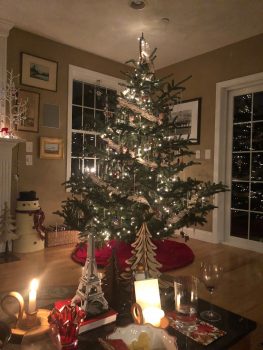
L’arbre de Noël / The Christmas Tree
Noël / Christmas
I’ve always found the word Noël a bit of an enigma. Compared to it’s nearby European neighbors, Noël doesn’t say much at all. The English word Christmas is pretty self-explanatory (as are the Spanish Feliz Navidad / Joyous ( or Happy) birth and German Frohe ( or Fröhliche) Weihnachten / Merry ( or Joyful) Holy Night).
To answer my question I started where I often do, on the internet . . . which as is often the case, was both less than helpful, and full of fun surprises. In the end though, with a little sleuthing (and the help once again of my trusty Petit Larousse ), I was able to confirm that the most likely origins* of the word Noël (and of its meaning) is a transformation of the Latin phrase natalis dies / day of birth with the dies dropped and the natalis losing some consonants and ‘softening up’ so to speak as words do over time.
One other thing about Noël that often confused me was that, despite the fact that Noël is a masculine noun (as attested to by the Joyeux**), I would sometimes hear people talk about la Noël. The reason it turns out is actually quite simple: while Noël is masculine, the word for holiday in French ( fête ) is feminine, and when someone says la Noël, what they’re really saying is la (fête de) Noël . . . and leaving out the fête!
Le Réveillon / Christmas eve dinner
Like anyone, I like les cadeaux ( pressents). And I have to admit that I get a little carried away with les décorations et l’arbre de Noël ( the decorations and the Christmas tree). But my very favorite Christmas tradition has to be the Christmas Eve (or sometimes as the case may be, very, very early Christmas morning!) dinner. Traditionally held after la messe de minuit ( midnight church service) , le Réveillon reunites family and friends around a wonderful meal, wines, and festive desserts . A few years ago, fellow blogger Josh D. wrote a great post all about le Réveillon here where you can read all about the traditions. For this year, I thought I’d share some photos of my own from some of my favorite Christmas Eve meals through the years.
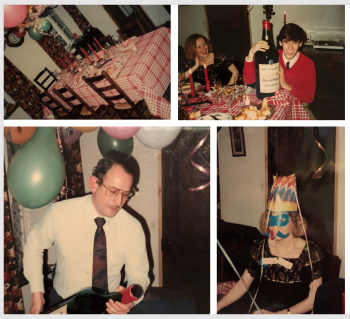
Noël 1985 during my first trip to France. Check out that bottle of wine!
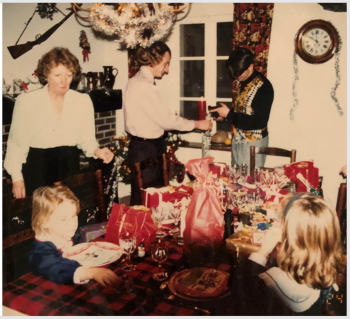
1992 found me back in France for my second Réveillon.

Since marrying into my French Canadian in-laws, le Réveillon has once again become part of our family Christmas traditions. There are more people around the table than in those early Réveillons but it just makes the holiday brighter!
* Other theories on the origins of the world Noël include older pre-Christian Gaelic and Celtic pagan celebrations to the returning sun god (the winter solstice – December 21 – being the shortest day in the northern hemisphere). ** If Noël were a feminine noun, we would say Joyeuse Noël . . . But of course we don’t. That would be wrong.
Image Credits: All images courtesy of / copyright Tim Hildreth 1985 – 2017.

Build vocabulary, practice pronunciation, and more with Transparent Language Online. Available anytime, anywhere, on any device.

About the Author: Tim Hildreth
Since my first trip to France at 16, I have been a passionate francophile. I love the language, food, music, art, people, and more that make France and la Francophonie in general such an amazing part of our global community. Having lived in France and studied the language and culture for over 35 years, it is my great pleasure to be able to share a little bit of my deep love with you through this blog.

In order to continue enjoying our site, we ask that you confirm your identity as a human. Thank you very much for your cooperation.
French Christmas Conversation (Translation & Audio Pronunciation)
Listen to my audio recordings of a French Christmas conversation: listen to my enunciated and modern spoken pronunciation and learn about Christmas in France.
This Christmas conversation in French and English comes with audio recordings. Please press on the audio players to listen to my slower enunciated French recording and then to the more natural, modern spoken French pronunciation .
Authentic French Christmas Conversation
Use the floating blue icon in the bottom right to hide/reveal the English translations below or just click here .
Slower Enunciated French
Modern Spoken French
Camille et Pierre, un de ses étudiants, parlent de leurs projets pour les fêtes de fin d’années.
Camille and Peter, one of her students, are speaking about their plans for the holidays.
Pierre Qu’est-ce que vous faites cette année, pour les fêtes de fin d’années ?
What are you doing this year for the holidays?
Camille Et bien comme d’habitude, on va fêter Noël avec la famille d’Olivier.
Well, as usual, we’re spending Christmas with Olivier’s family.
Pierre Et ta famille ?
What about your family?
Camille Ma famille n’est pas religieuse, et pour éviter les conflits entre belles-familles, ma mère a décidé il y a longtemps qu’on ne célébrerait jamais Noël le 24 ni le 25, mais un autre jour.
My family is not religious, and in order to avoid in-laws conflicts, my mother decided a long time ago that we would never celebrate Christmas on the 24th nor the 25th , but another day.
Pierre En juin ?
Camille Pourquoi pas :-) Généralement, on fête la Saint Nicolas, le 6 décembre. Ma famille est d’origine alsacienne, et c’est la tradition là-bas d’échanger les cadeaux le jour de la Saint Nicolas, et de préserver ainsi le côté purement religieux du jour de Noël.
Why not :-) Usually, we celebrate St Nicholas’ day, on the 6th of December (St Nick is the French Santa ). My family originates from Alsace, and it’s the tradition to exchange gifts on St Nicholas’ day over there and to save Christmas day for strictly religious matters.
Pierre J’aime bien cette idée.
I like that idea.
Camille Oui, ça arrange tout le monde. Dans ma belle famille, c’est tout le contraire. Noël est LA fête familiale, et on respecte les traditions.
Yes, it makes everybody happy. For my in-laws, it’s exactly the opposite. Christmas is the quintessential family holiday, and they respect traditions.
Pierre C’est à dire ?
What do you mean?

An audio novel for all levels. Explore Paris with modern, lively and realistic dialogues
More Details & Audio Samples
Christmas French Conversation – Midnight Mass
Camille Et bien, traditionnellement en France, on fait un grand repas après la messe de minuit, tard dans la nuit, qu’on appelle “le Réveillon”. Mais maintenant, de moins en moins de gens vont à la messe. Alors pour des raisons pratiques, on fête souvent Noël le lendemain : les enfants ouvrent les cadeaux le matin, et toute la famille se réunit pour un déjeuner de fête. Dans la famille d’Olivier, on fait les deux.
Well, traditionally in France, we have a big meal after the midnight mass, late into the night, that is called “the awakening”. But nowadays, fewer and fewer people attend the mass. Therefore, for practical reasons, we often celebrate Christmas the day after: Children open the presents in the morning, and the whole family gets together for the holiday luncheon. In Olivier’s family, they celebrate both.
Pierre Les deux?
Camille Ben oui. On se réunit le 24 au soir, on fait un dîner simple mais sympa, et puis quelques fois on va tous ensemble à la messe de Noël. Moi, je ne suis pas pratiquante, mais c’est plus pour la tradition que j’y vais. Je me souviens de messes de minuit vraiment magiques, avec des crèches humaines, des défilés d’enfants déguisés en anges, de la musique et plein de chants et de bougies partout…
Yes. We get together on the 24th in the evening, we have a simple but nice dinner, and sometimes we all attend Christmas mass . I don’t practice religion, but it’s more for the traditional aspect that I go. I remember really magical midnight mass, with live nativity scenes, parades of children costumed as angels, music and many songs and candles everywhere.
Christmas Conversation in French – The French Christmas Meal
Camille Et puis c’est le 25 qu’on fait notre réveillon: on se met sur son 31, on mange du foie gras, des huîtres, du saumon fumé, une dinde aux marrons ou un jambon cuit, et en dessert, une bûche de Noël. Et bien sûr, on boit du bon vin et du champagne.
Then, it’s on the 25th that we do the traditional French Christmas meal : we all dress to the nines, we eat foie gras, oysters, smoked salmon, a turkey with chestnuts or a roasted ham, and for dessert, a yule log. And of course, we drink good wines and champagne .
Pierre C’est quoi “une bûche” ?
What’s a yule log?
Camille C’est un gâteau en forme de bûche, qui fait référence à la vieille tradition de faire brûler une bûche chargée de symboles pendant 3 jours autour de Noël. Il y a plein de traditions comme ça, souvent régionales, mais qu’on ne respecte plus vraiment aujourd’hui.
It’s a cake shaped like a log (traditional French Christmas cake ), which refers to the antique tradition to burn a symbolic log for 3 days around Christmas. There are many traditions like this one, often regional, but that we don’t quite follow any longer nowadays.
Pierre Et les cadeaux ? Est-ce que Leyla croit au Père-Noël ?
What about the presents? Does Leyla believe in Santa?
Camille Oui, Leyla a 5 ans et c’est une petite fille très moderne: elle nous a dit l’autre jour qu’elle voulait écrire un email au Père Noël… Je peux te dire qu’on a bien rigolé !!
Yes, Leyla is 5 and is a very modern little girl: the other day, she told us she wanted to write Santa an email… I can assure you we had quite a laugh!
Pierre J’imagine !
Yes, I imagine!
French Conversation About Christmas – Presents 🎁
Camille Enfin, pour les cadeaux, traditionnellement c’est le 25 au matin. Le Père Noël passe pendant la nuit, et dépose les cadeaux dans les souliers posés autour de l’âtre. Bon, mais maintenant qu’il n’y a souvent plus de cheminée dans les maisons ou appartements, on place généralement les cadeaux sous le sapin. On laisse les enfants ouvrir un ou deux cadeaux le matin, et on attend que la famille arrive pour ouvrir tous les cadeaux… ou quelque chose comme ça… enfin quoi, on s’arrange pour faire plaisir à tout le monde et laisser une place au Père Noël. Et toi Pierre, tu fais quoi cette année pour les fêtes ?
Then, for the presents, traditionally it’s in the morning of the 25th. Santa comes during the night and leaves the presents in shoes displayed around the hearth. Well, but nowadays since there are no more fireplaces in houses or apartments, presents are usually placed under the Christmas tree. We let the children open one or two presents in the morning, and we wait for the whole family to get here to open all the presents… or something along those lines… in other words, we do our best to please everybody and leave a small place for Santa. What about you Pierre, what are you doing this year for the holidays?
Pierre Moi, je ne suis pas du tout religieux, alors je pars en vacances pour faire du ski. Et Leyla, elle a des vacances ?
I am not religious at all, so I’m going on a ski trip. What about Leyla? Is she going to be on vacation?
Camille Oui, comme tous les écoliers, elle a deux semaines de vacances. En général, en France, le 25 décembre et le 1er janvier sont fériés. Mais si ça tombe un jeudi ou un mardi, les Français font le pont.
Yes, like all students, she has a 2 weeks vacation. In general, in France, December 25th and January 1st are official holidays. But if it happens to fall on a Thursday or a Tuesday, then the French take the in-between days off.
Pierre Qu’est-ce que ça veut dire ?
What does it mean?
Camille Ça signifie qu’on ne travaille pas le vendredi ou le lundi, et on relie le jour férié au week-end.
It means we don’t work on Friday or Monday, and ‘bridge’ the holiday to the weekend.

French Christmas Dialogue – Merry Christmas!
Pierre Ah, d’accord. C’est cool ! Bon, Camille, je vois que c’est bientôt la fin de la leçon, alors je voulais te souhaiter à toi et ta famille un joyeux Noël et une bonne année.
All right. Sweet! OK, Camille, I can see it’s almost the end of the lesson, so I wanted to wish you and your family a Merry Christmas and happy new year .
Camille Merci Pierre. Je te souhaite également de passer d’excellentes fêtes de fin d’années, et que tous tes voeux se réalisent en 2024.
Thank you, Pierre. I too wish you great holidays as well, and may all your wishes come true in 2024.
If you enjoy this kind of bilingual story, check out French Today’s downloadable French audiobooks : French Today’s bilingual novels are recorded at different speeds and enunciation, and focused on today’s modern glided pronunciation.
Camille Chevalier-Karfis
Born and raised in Paris, I have been teaching today's French to adults for 25+ years in the US and France. Based on my students' goals and needs, I've created unique downloadable French audiobooks focussing on French like it's spoken today, for all levels. Come to Paimpol and enjoy an exclusive French immersion homestay with me in Brittany .
More Articles from Camille Chevalier-Karfis
You Might Also Enjoy...
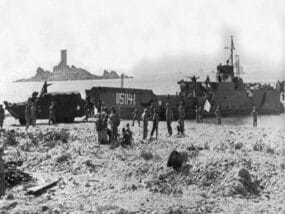
Leave a Comment Cancel reply
You must be logged in to post a comment.
More free lessons
- Free bilingual French audio novel Browse it online or free download
- 150 French bilingual stories With hide and reveal English translations
- Cinderella Audio French Tale Like I tell it to my daughter
- Provence French practice videos Come with me on vacation to sunny Provence
- Christmas French Conversation Realistic dialogues, English translation, enunciated & modern French recordings
- House audio visit in French Welcome to John’s house!
- French practice videos at the beach Sea la vie!
- Antoine is sick Just a crazy fun story with audio
- Brittany Sea Shanty Festival Welcome to Paimpol’s biggest festival
I publish posts every week. Want to keep up to date with the new content? ✉️ Subscribe to my weekly newsletter
Recorded at 3 different speeds + Study Guide + Q&A + Full Transcript
Copyright - French Today 2024
- Privacy Policy
- Mentions Légales
- Affiliate Program
Can You Understand Today’s Spoken French?
It’s not just slang. The French everybody speaks in France today is NOT the overly enunciated, extremely formal French usually taught to foreigners.
TAKE YOUR FREE AUDIO TEST NOW

4 Spoken French Scripts about Christmas in France
- December 22, 2023
One of the best benefits of learning real, everyday spoken French is that you can finally USE your French.
You then have the language you need to converse and build relationships with French-speaking people.
With Christmas approaching, I’d help you improve your spoken French fluency with useful French scripts about the holiday season.
C’est parti!
Index: Dialogue 1: Préparer Noël – Christmas preparations Dialogue 2: Les traditions locales – Local traditions Dialogue 3: Noël en famille – Christmas in the family Dialogue 4: Les films et chansons de Noël – Christmas movies and songs
Each dialogue comes with an analysis, a vocabulary review and more resources about its theme or difficulties.
Dialogue 1: Préparer Noël – Christmas preparations
Géraldine : Ah, ce week-end on a décoré l’appartement pour Noël. J’adore, et ça me rappelle des jolis souvenirs de famille. Géraldine: Ah, this weekend, we decorated the apartment for Christmas. I love it, and it brings back lovely family memories.
Lucie : Ouais, c’est clair. Je me revois gamine, à fouiller dans cette vieille boîte de déco de Noël que ma mère gardait au grenier. Elle avait un truc pour les bougies de Noël, sur les couronnes en sapin comme en Alsace. Lucie: Yeah, for sure. I can picture myself as a kid, rummaging through that old box of Christmas decorations my mom kept in the attic. She had a thing for Christmas candles, on wreaths made of pine, just like in Alsace.
Géraldine : Ah ouais ? Chez mes parents, c’était la crèche, le truc incontournable. Mon père l’avait fabriqué lui-même avec du matériel de modélisme, des petits arbres et tout. Ils la sortent encore tous les ans, d’ailleurs. Géraldine: Oh, really? At my parents’ place was the nativity scene, the must-have tradition. My dad had made it himself with modeling materials, little trees, and everything. They still take it out every year, actually.
Lucie : Ah c’est chouette ! Ça me fait penser, ma belle-mère collectionne les crèches. Je vais peut-être lui en ramener une de Grenoble cette année. Lucie: That’s nice! It reminds me of how my mother-in-law collects nativity scenes. I might bring her one from Grenoble this year.
Géraldine : Genre celle du conseil régional ? Géraldine: Like the one from the regional council?
Lucie : Haha, voilà, une crèche spéciale laïcité, en voilà une bonne idée ! Lucie: Haha, exactly, a special secular nativity scene. What a great idea!
Géraldine : Tu penses qu’ils vont nous refaire le coup cette année ? Créer la polémique pour se faire mousser ? Géraldine: Do you think they’ll stir up controversy again this year? Create a fuss to get attention?
Lucie : Oh, tu sais, moi, je m’en fiche, tant que personne ne touche aux grands sapins du centre-ville… Ou aux repas de Noël de la boîte ! Je tiens juste à mon petit père Noël en chocolat ! Lucie: Oh, you know, I don’t really care, as long as no one messes with the big Christmas trees in the city center… or the company Christmas dinners! I just really want my little chocolate Santa Claus!
1. Je me revois gamine, à fouiller dans cette vieille boîte de déco de Noël que ma mère gardait au grenier. = I can picture myself as a kid, rummaging through that old box of Christmas decorations my mom kept in the attic.
The speaker nostalgically recalls sifting through a box of Christmas decorations in the attic during their childhood, evoking warm memories of a family tradition.
- Je me revois gamine… – The speaker is recalling memories from their childhood, emphasizing a sense of self-reflection and introspection.
- Je me revois gamine, à fouiller dans cette vieille boîte de déco de Noël… – The sentence revisits the past, suggesting a youthful and carefree time during holidays.
2. Je tiens juste à mon petit père Noël en chocolat ! = I just really want my little chocolate Santa Claus!
The speaker conveys a simple desire for a small chocolate Santa Claus, emphasizing this holiday treat’s personal significance and joy.
- Je tiens à… – It indicates a personal attachment, importance, or significance placed on something, a personal wish.
Vocabulary:
- Les décos de Noël (informal) = les décorations = Christmas decorations.
- Décorer la maison / l’appartement = to decorate the house / flat .
- Une boîte (literally) = a box.
- Une boîte (informal) = une entreprise = a company.
- Une boîte de nuit (informal) = une discothèque = a night club.
- Un gamin, une gamine (informal) = un gosse, une gosse (informal) = un enfant = a kid.
- Un beau gosse, une belle gosse = un beau garçon, une belle fille = a handsome guy, a pretty girl.
- La crèche de Noël = Nativity scene.
- Une crèche (pour enfants) = a daycare center.
- Une crèche au conseil régional = a Nativity scene in the regional council.
- Je tiens à [faire ça] = I really want to [do that]
- Je tiens à [ça] = I care about [it],
- J’y tiens ! = I care about that!
- Tenir = to hold, to take, to keep, to care.
Keywords: une gamine, la crèche, la boîte.
Click here to learn more:
- Crèche de Noël
- Pourquoi les crèches de Noël sont autorisées dans les lieux publics
- À LA DÉCOUVERTE DU PÈRE NOËL EN CHOCOLAT
- Décoration de Noël : Tour de France des traditions
- Christmas in France – Le Sapin et el Père Noël (free CUF lesson)
Dialogue 2: Les traditions locales – Local traditions
Géraldine : C’est super bon ça, c’est quoi ? C’est fait maison ? Géraldine: This is really delicious. What is it? Did you make it yourself?
Fabien : C’est du pain aux courges ! J’ai trouvé la recette dans un podcast sur les traditions de Noël du Dauphiné, autour de Grenoble. C’est censé donner du moelleux à la brioche. Et je dois dire, ça marche pas mal. Fabien: It’s pumpkin bread! I found the recipe in a podcast about Christmas traditions in the Dauphiné region around Grenoble. It’s supposed to make the brioche soft. And I have to say, it works pretty well.
Géraldine : Ah ouais ? Trop bien ! C’est vrai que c’est bon. Merci d’en avoir ramené ! J’adore les pâtisseries de Noël. L’année dernière on avait fait deux cents rissoles, ces raviolis sucrés à la compote qu’on mange en Savoie pendant l’Avent, c’était super bon. Mais faut un peu d’organisation. Géraldine: Oh really? That’s great! It’s true that it’s good. Thanks for bringing it! I love Christmas pastries. Last year, we made two hundred rissoles, these sweet dumplings with applesauce that we eat in Savoie during Advent, and it was really good. But it requires a bit of organization.
Fabien : C’est sûr. Mon beau-père en Alsace ramène toute sa famille et tous ses amis pour faire des gâteaux locaux, les “bredeles,” à la cannelle, aux agrumes et au chocolat. Chaque année, leur maison se transforme en grand atelier pendant tout un week-end, on fabrique des gâteaux toute la journée et on repart chacun avec plusieurs paquets à distribuer. Fabien: That’s for sure. My father-in-law in Alsace brings his whole family and friends together to make local cakes, the ‘bredeles’ [bray-duh-luh], with cinnamon, citrus, and chocolate. Every year, their house turns into a big workshop for a whole weekend. We make cookies all day, and each of us leaves with several packages to distribute.
Géraldine : Ah, super ! Ça me donne envie de faire une bûche au chocolat et à la confiture pour ce week-end, maintenant. J’ai une bonne recette qui traîne quelque part. Géraldine: Ah, great! It makes me want to make a chocolate and jam Yule log for this weekend now. I have a good recipe lying around somewhere.
Fabien : L’expert dans le podcast parlait justement des bûches, aussi. Il rappelait qu’avant, pour Noël, les paysans ramenaient le plus gros morceau de bois qu’ils trouvaient. Cette bûche devait pouvoir brûler pendant toute la veillée, les messes et le repas. C’est devenu une pâtisserie, mais le symbole est resté ! Fabien: The expert in the podcast was also talking about Yule logs. He mentioned that, in the past, the peasants would bring the largest piece of wood they could find for Christmas. This log had to burn throughout the evening, the masses, and the meal. It has become a pastry, but the symbol has remained!
1. C’est censé donner du moelleux à la brioche. Et je dois dire, ça marche pas mal. = It’s supposed to make the brioche soft. And I have to say, it works pretty well.
The statement describes an intention to impart a soft texture to the brioche using a particular method, which they note is quite effective.
- C’est censé donner du moelleux à la brioche. – It expresses the purpose of enhancing the softness of the brioche.
- Et je dois dire, ça marche pas mal. – The sentence conveys a casual expression of approval or satisfaction. “Je dois dire” and the colloquial “pas mal” contribute to an informal and conversational tone, suggesting a more personal and relaxed communication style.
2. Ça me donne envie de faire une bûche au chocolat et à la confiture pour ce week-end, maintenant. J’ai une bonne recette qui traîne quelque part. = It makes me want to make a chocolate and jam Yule log for this weekend now. I have a good recipe lying around somewhere.
The sentence communicates the speaker’s desire to bake a chocolate and jam Yule log, mentioning a specific recipe and conveying a relaxed and informal tone.
- Ça me donne envie de faire une bûche. – It expresses a stimulus for action, conveying that the idea is appealing or tempting to the speaker.
- J’ai une bonne recette qui traîne quelque part. – The speaker has a good recipe, and “qui traîne quelque part” (= lying around somewhere ) suggests a casual or familiar tone as if they don’t know where they precisely left the recipe.
- Fait maison = homemade.
- C’est censé [+ inf] = C’est supposé… = It’s supposed to… C’est censé aider. = It’s supposed to help. J’étais censé les avoir avant Noël. = I was supposed to have them before Christmas.
- Ça me donne envie de [+ inf.] = It makes me want to + infinitive . J’ai envie de… [+ noun or inf.] = I want [to], I feel like [doing]. J’ai pas envie. = Je n’ai pas envie. = I don’t want to. / I don’t feel like doing it. Une envie = a wish, a desire, a longing. La jalousie = the envy.
- Pas mal = pretty good, “not bad” (high praise actually!).
- Une bûche de Noël = Yule log.
- La cannelle = cinnamon.
- Traîner = to hang around, to lie around, to drag. On va traîner dans le parc. = We’re gonna hang out in the park. Arrête de traîner. = Stop dawdling. Range tes trucs qui traînent. = Pick up your stuff that’s lying around.
Keywords: la cannelle, une bûche.
- Et si on misait sur un repas de Noël traditionnel ?
- Noël en Dauphiné (podcast in French)
- Bûche de Noël
- Le 13H fête Noël 2022 : les rissoles de Savoie (TF1 Info, in French)
- Santons, Saint-Nicolas, papillotes, gaufres… Quelles sont les traditions de Noël dans les régions françaises ?
- What to eat at a traditional French Christmas dinner (free CUF lesson)
- Christmas in France: Traditions and Religion (free CUF lesson)
- How would you celebrate Christmas in France? (free CUF lesson)
Dialogue 3: Noël en famille – Christmas in the family
Géraldine : Je suis allée chercher le chapon chez le boucher. T’as récupéré la bûche ? Géraldine: I went to pick up the capon from the butcher. Did you get the Yule log?
Arthur : Oui, je viens de rentrer de la pâtisserie. Arthur: Yes, I just got back from the pastry shop.
Géraldine : Eh bien tout est prêt, y’a plus qu’à préparer le festin ! Géraldine: Well, everything is ready; we just need to prepare the feast now!
Arthur : Ouais, mais d’abord, il me reste quelques cadeaux à emballer… On a bien assez de rouleaux de papier cadeau, hein ? Arthur: Yeah, but first, I still have a few gifts to wrap… We have enough gift wrap rolls, right?
Géraldine : Ouais t’inquiète, papa en a racheté deux rouleaux. Tu pourras faire ceux de maman aussi ? Géraldine: Yeah, don’t worry. Dad bought two more rolls. Can you wrap Mom’s gifts, too?
Arthur : Pas de problème. Et pour la table, j’ai ramené de Strasbourg deux-trois décorations, genre des petites étoiles dorées à mettre sur la nappe. Ça va faire super joli. Arthur: No problem. And for the table, I brought back a few decorations from Strasbourg, like small golden stars, to put on the tablecloth. It will look really lovely.
Géraldine : Trop cool. D’ailleurs ça me fait penser, moi j’ai des serre-têtes de rennes. Géraldine: That’s awesome. It reminds me I have some reindeer headbands.
Arthur : De Rennes ? La ville ? Ou de Reine des Neiges ? Arthur: Reindeer? Like the city? Or from Frozen?
Géraldine : Nan, de rennes, comme les rennes du Père Noël. Je les ai trouvés sur le marché de Noël de Grenoble, j’en ai pris six. Tiens regarde, mets-le ce sera rigolo. Géraldine: No, reindeer, like Santa’s reindeer. I found them at the Christmas market in Grenoble; I bought six. Look, put one on; it’ll be fun.
Arthur : J’adore ! Et sinon, en fin de compte, on va à la messe de minuit ce soir ? Arthur: I love it! So, are we going to the midnight Mass tonight, after all??
1. Eh bien tout est prêt, y’a plus qu’à préparer le festin ! = Well, everything is ready; we just need to prepare the feast now!
The sentence conveys the speaker’s satisfaction with the preparations and introduces the imminent action of preparing a feast in an informal way with eagerness and an enthusiastic tone.
- Eh bien tout est prêt. – “Eh” is a commonly used exclamation in spoken French at the beginning of a sentence. The use of “tout” (= everything) indicates thorough preparation.
- Y’a plus qu’à préparer le festin ! – This phrase introduces the upcoming action. The use of “ y’a ” (a contraction of “il y a”) and the colloquial “ festin ” contribute to an informal and conversational style, suggesting a relaxed and familiar atmosphere.
2. Ouais, mais d’abord, il me reste quelques cadeaux à emballer… On a bien assez de rouleaux de papier cadeau, hein ? = Yeah, but first, I still have a few gifts to wrap… We have enough gift wrap rolls, right?
We can feel a conversational and relaxed atmosphere, discussing wrapping gifts and seeking confirmation about the availability of wrapping paper for the upcoming festivities.
- Ouais, mais d’abord, il me reste quelques cadeaux à emballer… – The use of “Ouais” as a colloquial and informal way of saying “Yeah” sets an easygoing and conversational tone. “Il me reste quelques cadeaux à emballer” specifies the task at hand, indicating the speaker still has a few gifts left to wrap.
- On a bien assez de rouleaux de papier cadeau, hein ? – With this informally made question, the speaker seeks assurance about the availability of wrapping paper. “Hein” functions as a tag question, seeking agreement or confirmation.
- Chez le boucher = à la boucherie = at the butcher’s. Chez le pâtissier = à la pâtisserie = at the pastry shop (often la boulangerie = bakery ).
- Le festin = the feast. Préparer le festin = to prepare the feast.
- Un serre-tête de rennes = a reindeer headband. Un renne du père Noël = Santa’s reindeer Rennes = city in Brittany. La Reine des Neiges = the Snow Queen = French title of Disney’s “Frozen”
- Un cadeau = a gift. Emballer un cadeau = to wrap a gift. Le papier cadeau = gift wrap (paper).
- Rigolo / Rigolote = drôle = funny Rigoler = t o laugh, to giggle, to kid, to joke. Je rigole = I’m kidding. I am joking. Une rigolade = a laugh, a joke.
Keywords: le papier cadeau, le Père Noël, rigolo.
Click here to learn more :
- Noël : le chapon, la star de la table durant les fêtes
- MARCHÉ DE NOËL DE GRENOBLE
- Messe de Minuit
- Best French Christmas gifts to take back home (free CUF lesson)
- Christmas in France – La Nuit de Noël (free CUF lesson)
Dialogue 4: Les films et chansons de Noël – Christmas movies and songs
Géraldine : Et toi, si je te dis “films et chansons de Noël,” tu penses à quoi ? Géraldine: And you, if I say ‘Christmas movies and songs,’ what do you think of?
Manon : Oulah ! Là tout de suite, à chaud, je dirais… Les Rois Mages ? Le film des Inconnus, du début des années 2000. Je me souviens qu’on était allés le voir au ciné avec mes parents à l’époque, et j’avais bien aimé. Il y a quelques scènes qui m’ont marquée, c’est fou. Et toi ? Manon: Oh boy! Right now, off the top of my head, I’d say… ‘Les Rois Mages’? The film by Les Inconnus from the early 2000s. I remember we went to see it at the cinema with my parents back then, and I liked it. There are a few scenes that left an impression on me. It’s crazy. And you?
Géraldine : Hum, étrangement, pour moi, ce serait les Douze Travaux d’Astérix. Ou la Ballade des Dalton, avec Lucky Luke. Deux films d’animation qui n’ont rien à voir avec Noël, mais on les avait en K7 quand j’étais petite, et on les regardait en boucle pendant les vacances de Noël à la maison. Surtout qu’ils sont rediffusés tous les ans à la télé, de toute façon ! Géraldine: Strangely, for me, it would be ‘Les Douze Travaux d’Astérix’ (The Twelve Tasks of Asterix). Or ‘La Ballade des Dalton,’ with Lucky Luke. Two animated films have nothing to do with Christmas, but we had them on VHS when I was little, and we watched them on repeat during the Christmas holidays at home especially since they are broadcast on TV every year, anyway.
Manon : Ah oui, comme la Grande Vadrouille, à ce compte-là ! Par contre en chanson, j’hésite entre Anne Sylvestre et Jacques Dutronc. Manon: Oh, like ‘La Grande Vadrouille’ in that case! As for songs, I’m torn between Anne Sylvestre and Jacques Dutronc.
Géraldine : Oh, Anne Sylvestre, bien sûr ! J’adore ses chansons. Géraldine: Oh, Anne Sylvestre, of course! I love her songs.
Manon : Elle a fait tout un album sur Noël avec des chansons à moitié traditionnelles, ça a bercé mon enfance. Et puis Jacques Dutronc pour “La fille du père Noël” bien sûr ! Manon: She made a whole album about Christmas with half-traditional songs; it was part of my childhood.And then Jacques Dutronc for ‘La fille du père Noël’ (Santa Claus’ Daughter), of course!
1. Oulah ! Là tout de suite, à chaud, je dirais… = Oh! Right now, off the top of my head, I’d say…
It reflects a sense of immediacy and the speaker’s spontaneous reaction or opinion.
- Oulah ! Là tout de suite, à chaud… – “Oulah !” is an exclamation that conveys surprise, uncertainty, or a need for attention. It sets a tone of sudden engagement. “Là tout de suite” emphasizes immediacy. The speaker is responding in the heat of the moment.
- Je dirais… – It introduces the speaker’s opinion or response. The present conditional “ dirais ” (= would say ) suggests the speaker is tentatively expressing their opinion, indicating a degree of uncertainty or a willingness to reconsider.
2. Deux films d’animation qui n’ont rien à voir avec Noël, mais on les avait en K7 quand j’étais petite, et on les regardait en boucle pendant les vacances de Noël à la maison. = Two animated films that have nothing to do with Christmas, but we had them on VHS when I was little, and we watched them on repeat during the Christmas holidays at home.
The response mentions two childhood animated films unrelated to Christmas yet cherished and repeatedly watched during the festive holiday season, emphasizing their sentimental value in the context of Christmas at home.
- Deux films d’animation qui n’ont rien à voir avec Noël… – It specifies that the films are not related to Christmas, setting up a contrast with the holiday season.
- On les regardait en boucle… – This part of the sentence expresses the repetitive nature of watching the films on a loop, suggesting they were a considerable part of the speaker’s holiday tradition.
- Là tout de suite = right now, at this very moment, immediately .
- À chaud = on the spot, right away Chaud = hot.
- À l’époque = at the time, at that time, back in the day. Une époque = a time, a period. La Belle Époque = the Belle-Epoque, le tout début du XXe siècle.
- Ils n’ont rien à voir avec Noël. = They’re not at all about Christmas. Rien à voir ! = Nothing to do with that! Ça n’a rien à voir. = It’s completely different.
- En boucle = “in a loop,” non-stop. Une boucle d’oreille = an earring. Des boucles = curls. Les cheveux bouclés = curled hair. Boucler = to loop, to buckle, to manage.
Keywords: Les Rois Mages, Anne Sylvestre, en boucle.
- Les Rois mages (2001)
- Les meilleurs films des Inconnus
- Les Douze Travaux d’Astérix (1976)
- La Ballade des Dalton (1978)
- La Grande Vadrouille (1966)
- Les 10 Plus Grands Films de Noël Français
- Les 20 meilleurs films de Noël francophones
- 1970 : Anne Sylvestre chante Noël avec sa fille | Archive INA
- Quand noël s’en vient ANNE SYLVESTRE Fabulettes
- La fille du Père Noël (Jacques Dutronc, 1966)
- Douce Nuit, Sainte Nuit (Chorale Gospel de Rueil Malmaison, 2010)
- Il est né le divin enfant (Tino Rossi, 1955)
- Petit Papa Noël (Tino Rossi, 1977)
- Joyeux Noël (Barbara, 1968)
- LES PLUS BEAUX CHANTS TRADITIONNELS DE NOËL
- French Christmas Movies (free CUF lesson)
Congrats! You completed the dialogues, what did you write down to remember? Are you interested in learning more about these parts of French Christmas? Which ones in particular?
If you enjoyed this format, by the way, you’ll be interested in my longer courses. You’ll get to practice and listen to real spoken French with real French people and situations, and real dialogues on a whole array of different topics, with programs from intermediate to advanced, such as French Vocabulary and Pronunciation – or the 30-Day French Challenges! The dialogues for today come from our 30-Day French Challenge, and the next Challenge is opening very soon! They’re all very fun, with our lovely community of lovely francophiles, and they’re designed to help you find confidence whatever French Conversation throws at you.
Here are the links:
- FRENCH VOCABULARY & PRONUNCIATION (course)
- FRENCH CONVERSATION WITH CONFIDENCE (course)
For now, write down two sentences that you want to remember from today’s dialogues, in the comments on the blog.
Or you can keep watching 5 more scripts of real-life French situations, with me!
Click here to get your next lesson:
- Merry Christmas in French: The Proper Pronunciation
- Merry Christmas in French and other French Christmas Greetings
- French Christmas Traditions: 7 words to know and use
- 5 Spoken French Scripts Before Your Next Trip to France
- Spoken French Fluency Self-Test (Hint: It’s Fun Too!)
À tout de suite. I’ll see you right now in the next video!
→ If you enjoyed this lesson (and/or learned something new) – why not share this lesson with a francophile friend ? You can talk about it afterwards! You’ll learn much more if you have social support from your friends 🙂
→ Double your Frenchness! Get my 10-day “ Everyday French Crash Course ” and learn more spoken French for free. Students love it! Start now and you’ll get Lesson 01 right in your inbox, straight away.
Click here to sign up for my FREE Everyday French Crash Course
Join the conversation!
Traditionally, the servants would not be forced to work until the Yule Log had completely burned. So, they would soak it in a lake until it was time to add it to the fire… to prolong their respite from work
Get My Weekly Lessons
In your inbox.
Join the 30,000+ French learners who get my premium spoken French lessons for free every week!
Share this post!
Session expired
Please log in again. The login page will open in a new tab. After logging in you can close it and return to this page.
Download this lesson as a PDF!
Please enter your name and email address to get the lesson as a free PDF!

Are you looking for a restaurant ? Click Here
- France Travel
- See & do
FRENCH CHRISTMAS CULTURE
A special way to fully enjoy christmas.
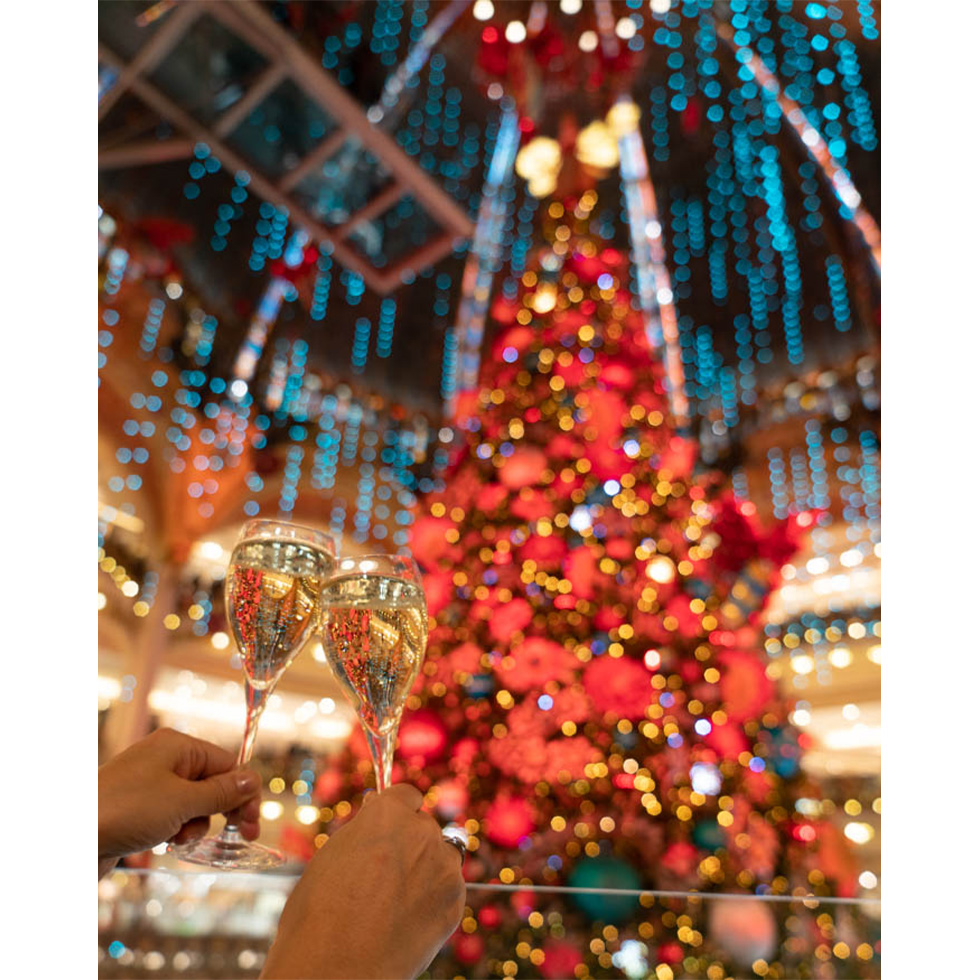
Christmas is the most important event in France. Cities will be filled with a festive Christmas mood starting mid-October and lasting until January. As France is known for its “Art de Vivre” culture, there are plenty of tips to enjoy life through the Christmas tradition. In this article, we introduce how French people spend Christmas and New Year, from typical tradition to the little things you can try easily. Whether you are in France during this Christmas or not, why not enjoy the festival in a beautiful French way?
Until Christmas - from mid-October until 24th December
In France, Christmas is traditionally a special occasion on which families gather. On the other hand, the New year is an event typically spent with friends. So there will be a two week winter holiday at school, and employees take a week off to visit their parents.
Advent Calendar
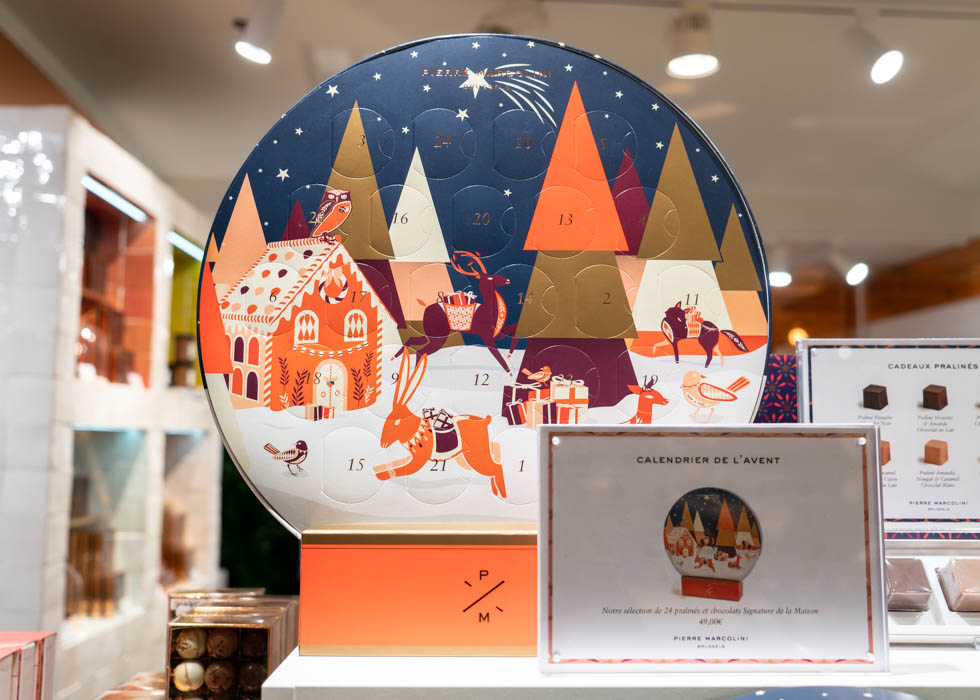
One of the most exciting ways to wait for Christmas day is the Advent Calendar. It is a special calendar used to countdown to 25th December; the celebration of the birth of Jesus. Usually, it has 24 or 25 small doors to open each day, and small gifts are hidden in it. This tradition first began in Germany in the 19th century, then it spread all over the world. In France, the Advent Calendar is sold from mid-October in supermarkets or department stores, and it tells people the arrival of the fabulous Christmas season. It comes in many shapes and forms and can contain various goods such as chocolate, candy, cosmetics, tea, wine, beer, cheese, or even French gourmet like foie gras! About the sweets calendar, famous pastries or chocolate shops sell Advent Calendar which is changed every year; definitely a must-check for sweets lovers. Pierre Hermé, Lenôtre, Sébastien Gaudard all offer beautiful pieces to chose from. Find your favorite one!
Christmas tree
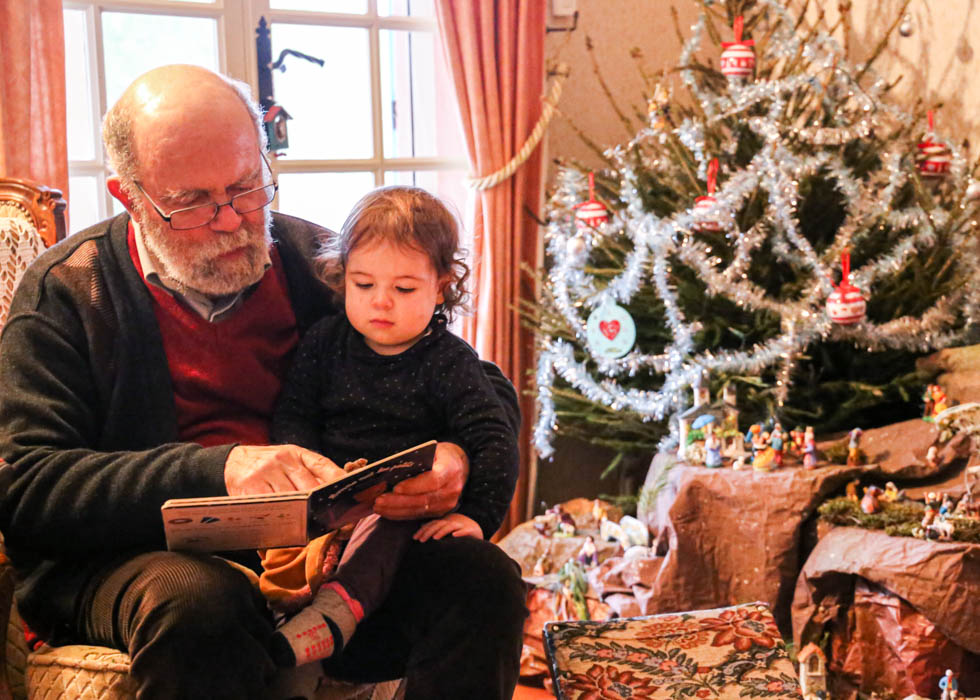
Home decoration is essential for Christmas. In France, Christmas trees are not fake but real! Many French people buy a real fir tree at flower shops, markets, or supermarkets, so these shops will be filled with plenty of fir trees of various sizes from late-November. The reason why we use fir trees is that it’s always green even during winter, and it represents eternal life. When the fresh green scent of Christmas trees smells everywhere in town, it makes people happy and relaxed.
Once the tree comes into a house, it is decoration time. In France, classical and cute ornaments are preferred over modern design. If you want to get a unique ornament, you should go to Christmas markets. There are decorations of traditional motifs like angels, bells, stars, Shepherd's canes, socks, which are made by artisans. Let’s decorate an “immortal” tree with saint motifs while wishing peace upon your loved ones. They are perfect for a merry French Christmas.
Besides Christmas trees, French people sometimes decorate a green holy with red berries on a table or in a house. However, the wreath is not very popular in France.
Santon crib
During Christmas time, it’s frequent to display “Nativity Scenes”, a.k.a "Crèche", in Churches, made of big statues representing the birth of Jesus (celebrated on Christmas day, December 25th). In December, French people display the "crèche" in miniature size at their own home. Santons are figurines that decorate it. This tradition was born in the south of France at the end of the 18th century. Initially, it was just in Provence, but it has grown throughout France. The real scene of Jesus’s advent was in Palestine, but Santons wear Provence’s traditional costume. Small santon figurines in colorful costumes are all cute! In the "crèche", the santon representing baby Jesus is added on 24th at midnight: it symbolizes his birth. On the 6th January, 3 figurines of Magis are added for Epiphany day. Usually, the crèche is displayed in the houses until mid-January. If you want to know more about Santons, check the dedicated article from here .
Christmas market
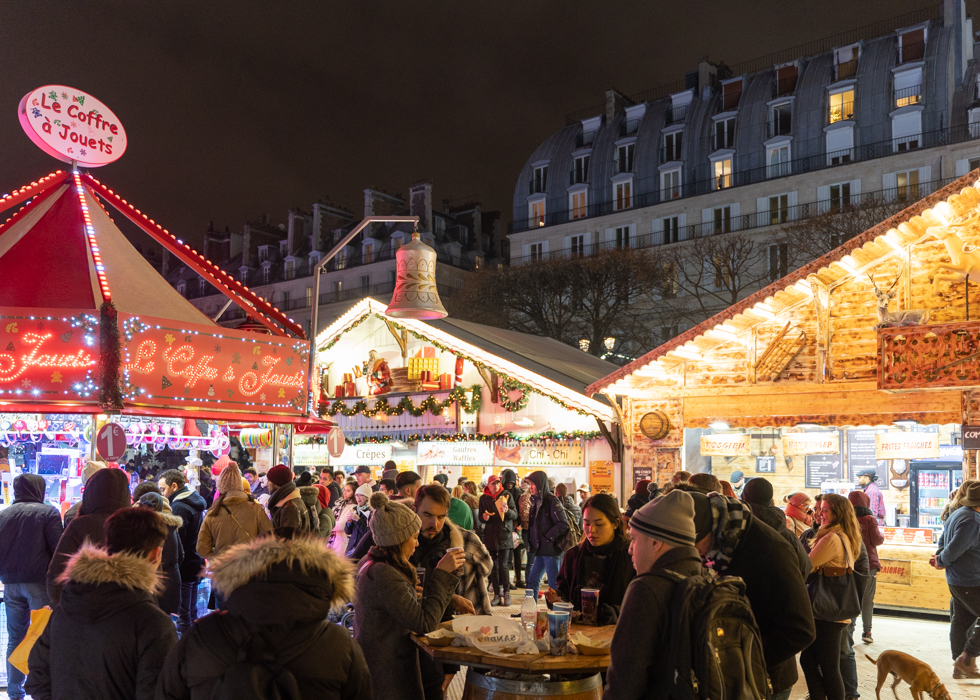
The Christmas market (Marché de Noël) is the best spot to stop by during the season. Drinking spiced hot wine or hot chocolate, eating melting raclette or freshly fried churros, everything in the Christmas market is magical and must-try. The most popular Christmas market in France is the one in Strasbourg. As the city is called the “capital of Christmas”, it is just like a wonderland. It is a place where you should visit once in a lifetime! Besides the Alsace region, Lyon’s market is also charming, and Tuileries Garden or La Défence are the ones we recommend in Paris. Have a stroll in a warm festive mood with your family and find original artisanal Christmas gifts that you cannot find anywhere else.
Christmas illumination
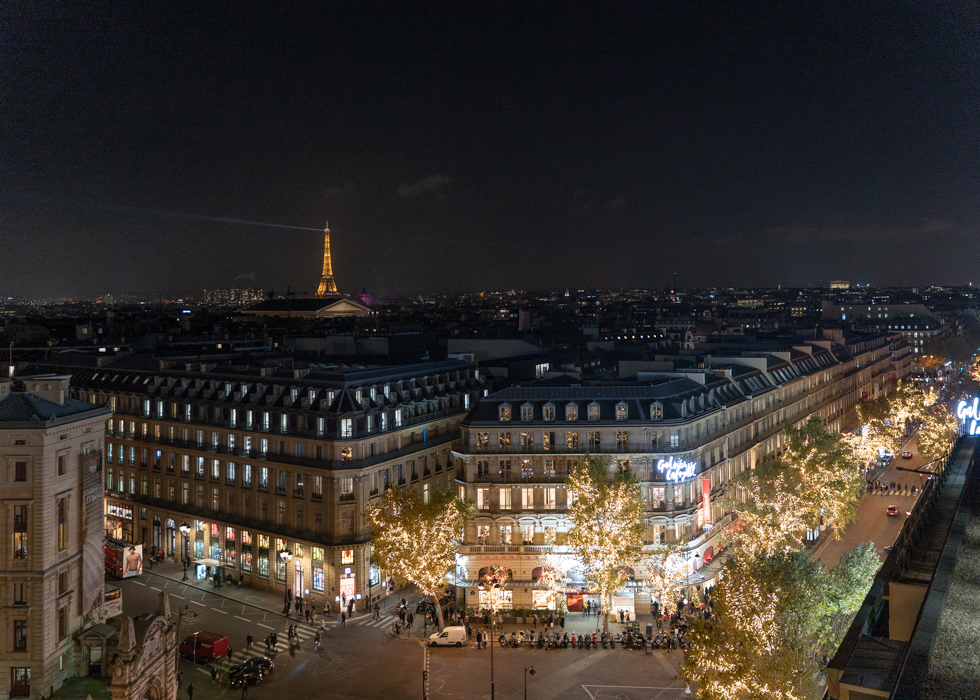
Do not forget about the dazzling view of the town! The gorgeous lights, animated show windows, huge delightful Christmas trees in department stores are all the main events of Christmas. From mid-November, the town starts sparkling in France, and it lasts until the beginning of January (The ending date varies by the location). Every year French people are willing to go watch stunning illumination in town and take some pictures. Paris’ main Christmas tree is in Galeries Lafayette. Its concept changes every year, and it surprises us every time!
Speaking of illumination, the most popular one in Paris is on the Avenue des Champs Elysées. In 2020, it’s complicated to travel to Paris from Asia. However, there is good news for you! Champs Elysées Avenue will hold an online virtual light show, which means everyone can participate in Parisian Christmas from everywhere without a border. It starts from 22nd November, and it will lighten up every day from 17:00 until 02:00 France time. Check it out from here . Have fun this Christmas with the magical charm of special Paris!
Christmas day - 24th and 25th December
Until Christmas Day, the French town was in a magnificent festive mood, but it changes a lot on the day. On the 24th, all shops close earlier than usual, and French people go back home. Then the next day, the town becomes completely calm as if it is enchanted or a silent movie. Let’s see what happens in these 2 days below!
Christmas present
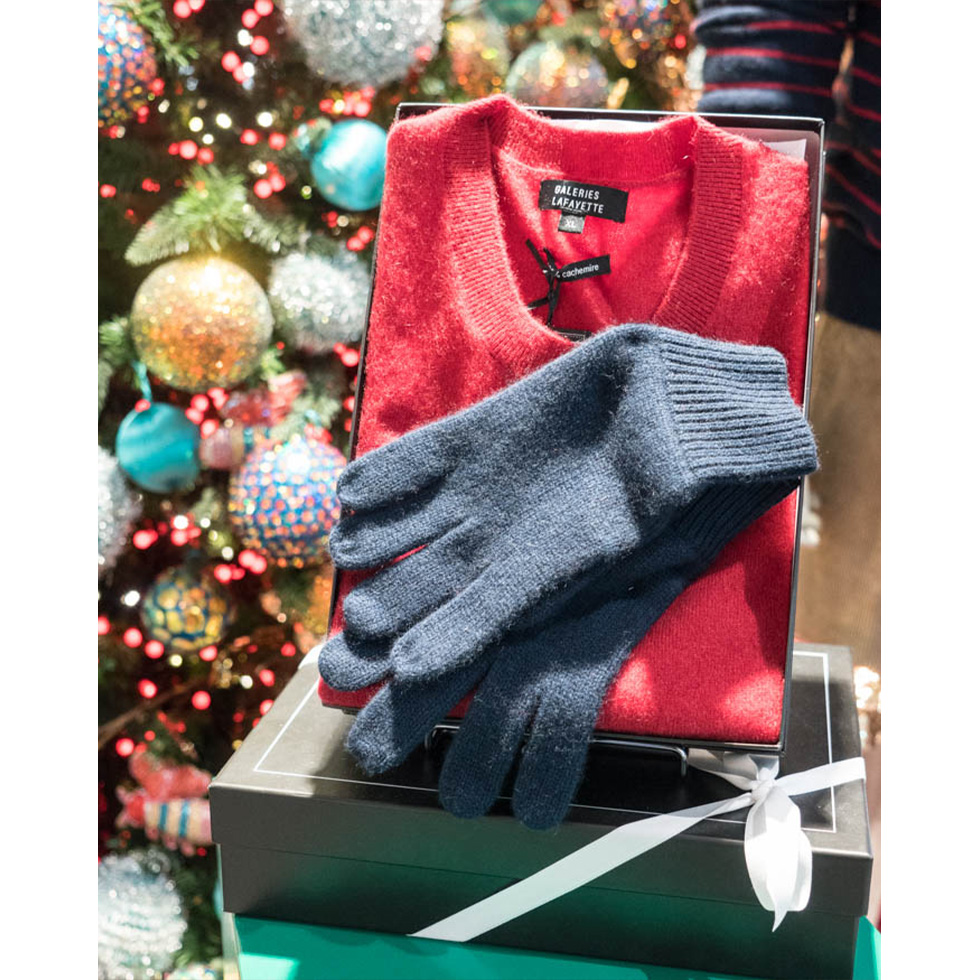
One of the most characteristic points of French Christmas is a big mountain of Christmas presents! In France, people offer gifts to all members of their family from kids to grandparents. French people put their gifts under the Christmas tree. First, they put slippers or shoes of all family members under the tree. After children fall asleep on the night of the 24th, adults leave presents next to the receiver’s shoes, so that they can see which gift is whose. Then, the next morning everyone starts to open their gift. It is heartful that all of them exchange presents as a sign of appreciation. Why not offer presents to every single family member to thank them for this Christmas? It would be the most heartwarming Christmas.
Special meal
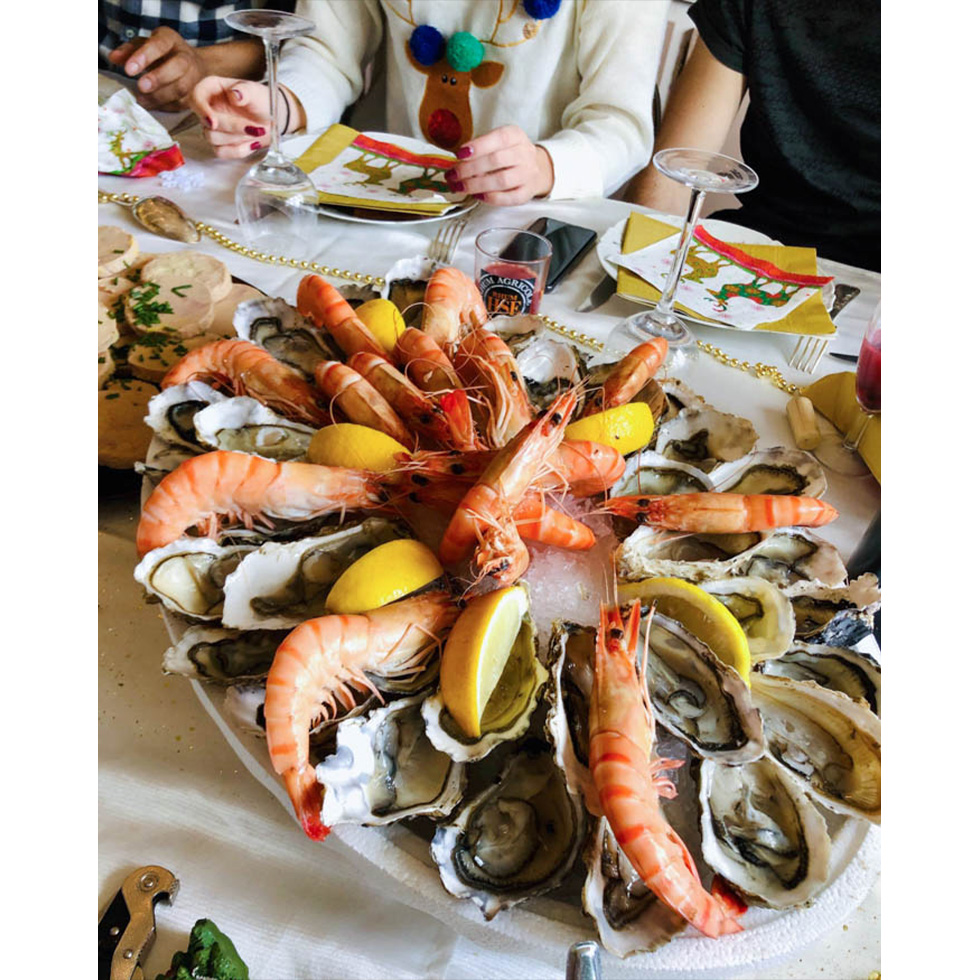
French Christmas habit is changing over time, but there are traditionally 2 special meals for Christmas. The first one is called “Réveillon (eve in French)” which is the diner of the 24th. It is a “simple” dinner without meat. They generally have vegetarian food or seafood such as oyster, gambas, lobster, and so on. In Provence, people have the ritual of 13 desserts which symbolizes 12 apostles and Jesus. There is the traditional bread in olive oil flavored with citrus zest called "oil pump", local confectionery and pastries (such as the famous calissons of Aix), nougat, candied fruits, fresh and dried fruits (raisins, almonds, figs, hazelnuts). on the evening of the 24th people eat a small piece of 13 different desserts, to get good luck.
The second one is the gorgeous full course menu on the 25th. It starts, of course, from a long apéritif time, then foie gras for starter, Turkey with maroon for the main course. For sure, there is a special dessert as the finale of the French Christmas meal. Check it below!
Bûche de Noël
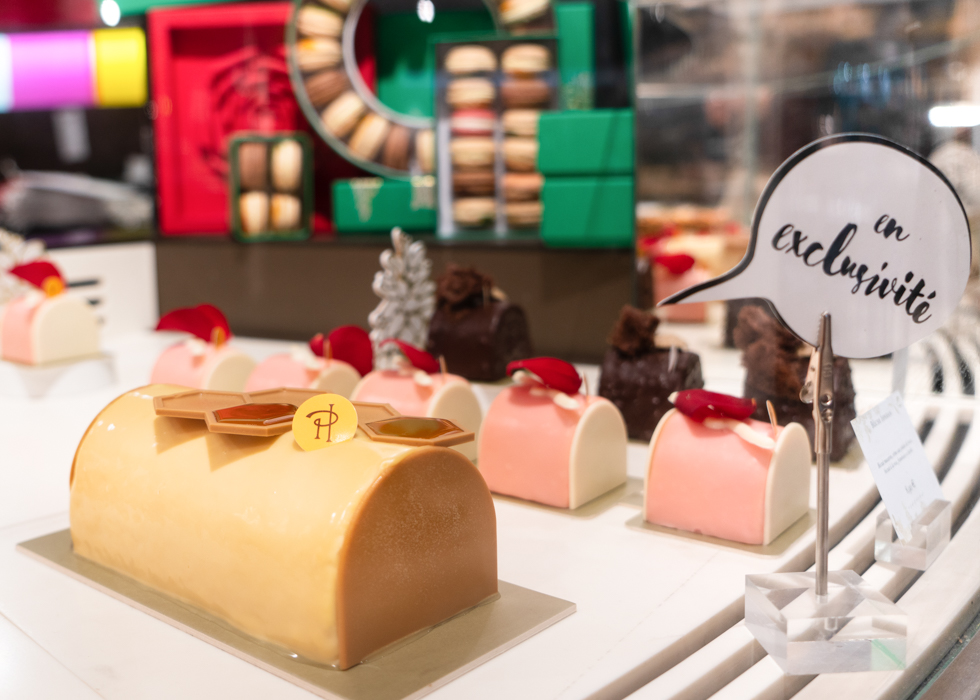
Voilà! French Christmas cake is bûche de Noël (Christmas log in French). As its name implies, the cake represents a log. It’s basically a roll cake covered with cream, but the design and ingredients vary by each pastry. The history of bûche de Noël is much longer than the Christmas tree or crèche (Nativity scene display at home), it dates back to the Middle Age. Perhaps, it was originally a real piece of wood! In some French-speaking countries in Europe, there were various customs featuring a piece of wood. One of the origins was a big fruit log to burn in the fireplace. People chose a large stump so that it continues to warm the house from 24th December to 1st January. Some say it was a homage to the sun during the dark winter days.
Today, the dessert is very creative and various such as made of mousse, ice cream, and so on. They are all too beautiful to eat! The bûche de Noël will make a place where families gather and smile just like a warm modern fireplace.
Mass and concert in churches
.jpg)
The most monumental moment of French Christmas is special masses and concerts held in churches on the night of 24th December and. French people who want to celebrate Christmas traditionally, go to church on the night of the 24th. The schedule is different in each church. Find the schedule of Parisian churches from here . The atmosphere of the midnight Mass is very solemn and purely impressive. It is a perfect occasion to appreciate the year and would be an unforgettable experience.
If you are in France this Christmas and plan to go participate in the Christmas Mass, there is a point to be careful about. Because the Mass lasts 1 - 2 hours in a church that the temperature is cold, be sure to wear very warm clothes with gloves, boots, and so on.
Furthermore, in some churches, there will be a live Nativity scene play. It’s good to know the story. On the internet, you can watch the French people’s play. If you are interested, you can find it on youtube by typing "crèche vivant".
New Year's eve to January - 31st December until 6th January
After the calm Christmas days, the New Year comes. In contrast to Christmas, New Year’s day is a lively festival! Christmas illuminations are still shining in the town and the tradition still continues until the 6th January. Basically, shops close earlier on 31st December, and they are closed on 1st January. But French people celebrate the new year in a different way.
New Year’s eve home party
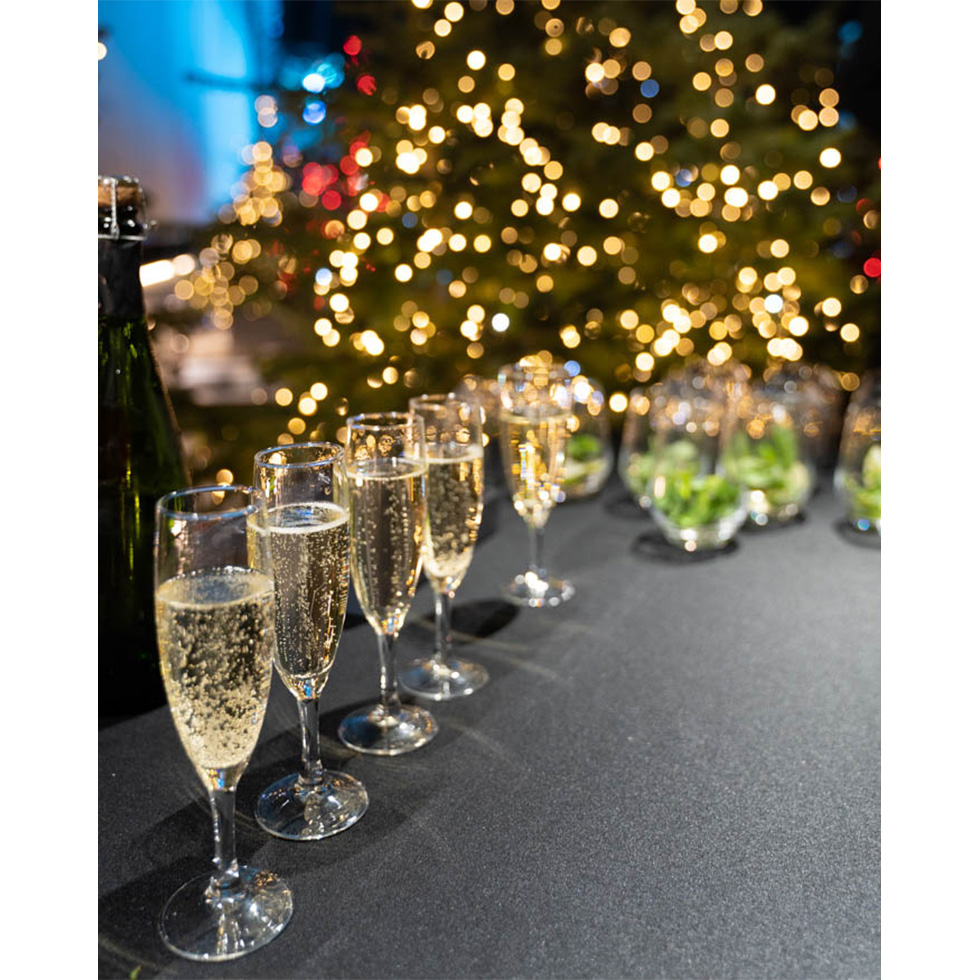
New year’s eve is called “réveillon du Nouvel An (New Years’ eve)” or “réveillon de la Saint Sylvestre”, and it is also an important event in France. But the atmosphere is completely different from Christmas. For New Year’s eve, French people usually hold a home party again with friends. It’s not a solemn event but an exciting one. French people usually invite friends, have a gorgeous meal from aperitif to dessert. The menu is quite similar to the one for Christmas. Then, they dance all night long while drinking champagne. At midnight, people say “Bonne année (Happy new year)”, and kiss each other, call their family, or send messages to wish a happy new year.
The interesting culture is mistletoe. You may have seen it in films. In France, people attach a mistletoe to the chandelier, and they kiss their loved ones under the mistletoe at midnight. It is a very ancient tradition of Celtic origin. The mistletoe symbolizes immortality for the same reason as the Christmas tree(it is always green). So it is said it has virtues, cure diseases, bring fertility and happiness. Today, it is customary that we kiss under the mistletoe at the stroke of midnight in order to bring good luck and be happy in love.
Countdown at Avenue des Champs Elysées
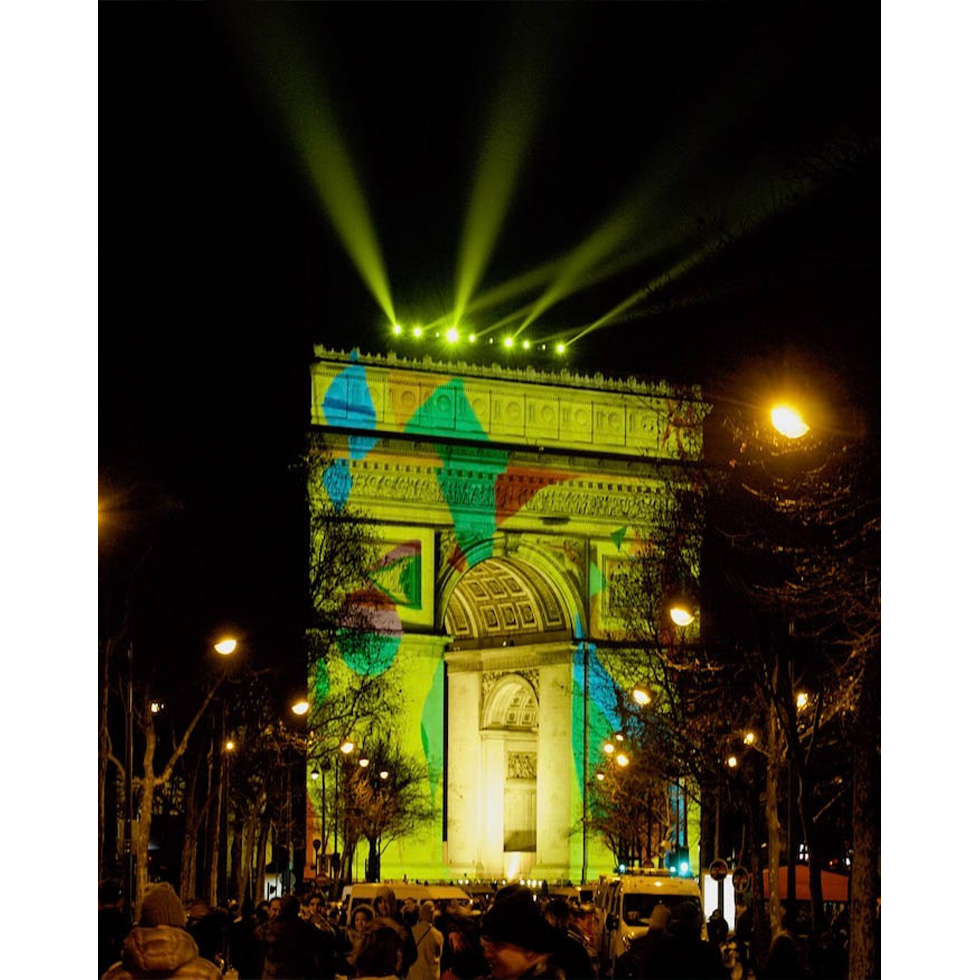
Throughout France, there are many countdown events. The most famous one is at the Champs Elysées. The street will be reserved for pedestrians, and people count down while watching beautiful projection mapping on the Arc de Triomphe. The event starts at about 40min before midnight with a dynamic light-up show, but to get a good place, you should arrive there 2 hours in advance.
Since a lot of people gather there, it’s hard to find a good spot, go to the restroom, and go home. Be aware of your security, especially pickpockets!
Epiphany on 6th January
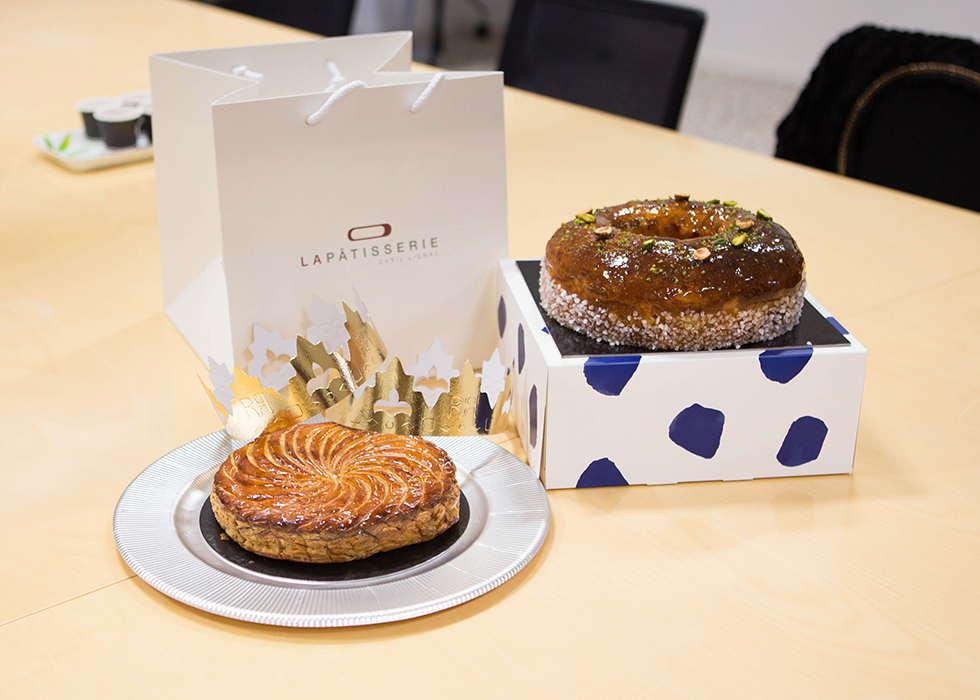
The Epiphany commemorates the visit of the three wise men who came to Bethlehem by following the shining star seen in the sky on the day of Jesus' birth. Their journey lasted 12 days before they saw the baby Jesus and offered him gifts (that’s why Epiphany is 12 days after Christmas). In order to represent this scene, there is a tradition to add 3 Santon figurines of wise men in the crèche (Nativity scene display) on 6th January in their house.
Another tradition for the Epiphany is to share “galette des Rois (Kings’ cake in French)” with your friends or family. It is composed of a puff pastry cake with frangipane paste (made of almond, butter, egg, and sugar) inside, and a small charm, called “fève” in French, is hidden in it. The one who finds the charm wears a paper crown as the King/Queen. However, the origin of this tradition is not related to Christianity. Its history dates back to the Romain era. The Romans celebrated the Saturnalia, feasts of the winter solstice, which consisted of designating the king or queen for a day, by using a bean hidden in a cake. Every year, the French pastry shops offer exclusive creations for the tradition. The taste, shape, design of charm are very varied by each shop. The tradition is spread in Asian countries as well, so it's easy to try this joyful experience in your country.
O'bon Paris' tip
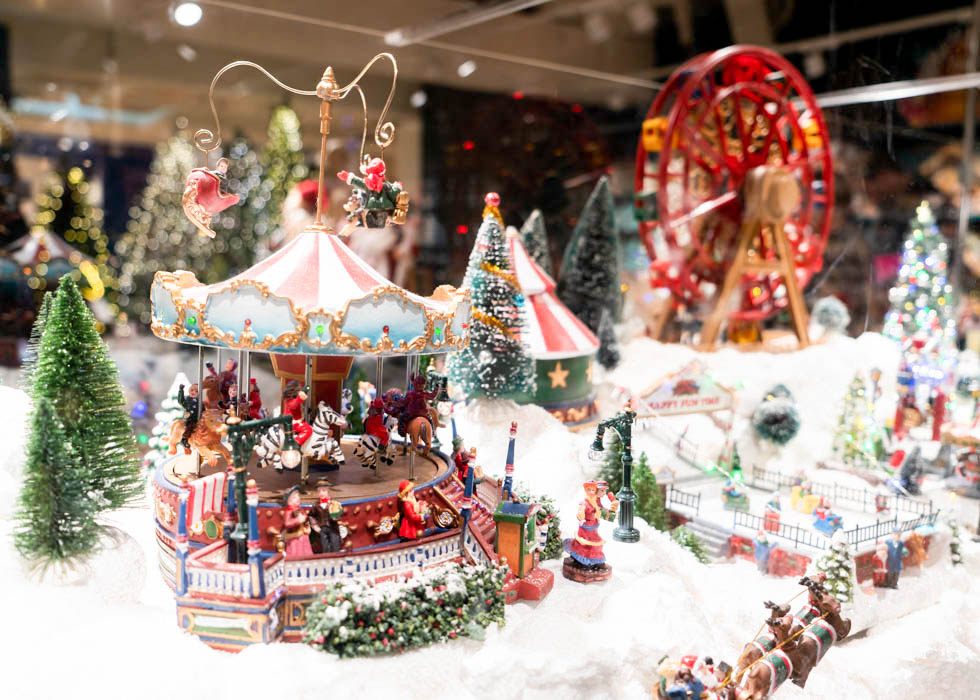
Even if we cannot travel abroad for this Christmas, these traditions could make you feel the real French Christmas spirit. Let's have an imaginary trip to France from your country. O'bon Paris team wish you a Merry Christmas and a happy new year. Joyeux Noël et Bonne Année!
Author & Photographs - O'bon Paris team
Related articles

O'Bon Paris
Paris travel.
- Eat & Drink
- See & Do
France travel
- Paris outskirts
- Central France
- South West France
- French riviera
Travel Info
- General Information
- Country Information
- Europe Travel
Follow us on :
©2024 - O'BonParis is a registered trademark of SoCobon
How do the French celebrate Christmas?
If you love celebrating Christmas, France should be at the top of your festive bucket list. With the scrumptious feasts, magical markets, charming traditions and beautiful decorations, Christmas really is the most wonderful time of year in France. From the gift-giving Père Noël to the magnificent Réveillon and the Fête des Rois traditions, here is how to celebrate a real French Christmas. Joyeux Noël!
The festive cheer begins in France before December even arrives with the wildly popular tradition of Advent calendars. Children are given the calendars before December so they can eagerly await the 1st of December when they open their first door or window.
The Advent calendars have a chocolate treat hiding behind the door for each day until Christmas Eve on December 24th, and it’s a wonderful way to get excited in the countdown to Christmas. You can even get Advent calendars for adults, with everything from candles to wine filling the boxes for your December countdown.
EXPERIENCE IT FOR YOURSELF: Best of France
Marchés de Noel
View this post on Instagram A post shared by France.fr (@francefr)
The Marchés de Noel, or Christmas Markets, are one of the very best parts of a French Christmas. They’re found all over the country from Paris to Nice and Provence to Normandy. The biggest Christmas market is held in Strasbourg in the Alsace region and the very first French Christmas market actually originated in Alsace in 1570. They’ve been bringing the Christmas magic ever since.
You’ll discover charming wooden chalets decorated with lights and ornaments, all selling local handicrafts, artisanal products, and traditional French foods. So what are you waiting for? Grab a vin chaud rouge (French mulled wine) and rub shoulders with the locals at the best French Christmas markets.
RELATED CONTENT: Your questions answered: Where are the best Christmas markets in France?
Santa Claus is ‘Père Noël’ in France, and on Christmas Eve, he travels around the world handing out presents. The tradition used to be for French children to fill their shoes with carrots for Père Noël’s donkey and put them by the fireplace, but today that has been replaced with the Christmas tree.
Père Noël climbs down the chimney to leave gifts for good children, and on Christmas morning, the kids run to the tree to see what Father Christmas has brought them. Sometimes, families open gifts on the evening of Christmas Eve, after Midnight Mass or the Réveillon.

For some families, the gift-giving season starts on December 6th, St. Nicholas Day. On the eve of St. Nicholas Day, French children put their shoes near the Christmas tree and sing songs or hear stories about Saint Nick. In the morning, all the good children will wake to find their shoes filled with treats. If they’re on Saint Nick’s naughty list, they get a bundle of twigs with a ribbon!
RELATED CONTENT: Who was St. Nicholas, and why is he celebrated on December 6th?
A letter from Père Noël
It’s a Christmas tradition around the world to write to Santa – but in France, he writes back. The country passed a law in 1962 that said children who wrote a letter to Père Noël must receive a postcard back. The postal services have kept this up for four decades, replying to thousands of children on behalf of Father Christmas.
Traditional Christmas decorations
The French love Christmas decorations just as much as any country, but they tend to be more elegant here. These are a few of the most popular French Christmas decorations:
Christmas trees
Christmas trees have been popular ever since the first Christmas tree was decorated in Alsace in the 16th century. The trees are traditionally decked out with ribbons, apples and paper flowers, and today you’ll see them with fairy lights, glittering baubles and a star on top.
Advent wreaths
You’ll spot Advent wreaths dotted around the country. The wreath is made of fir and pine tree branches, all decorated with red bows and pine cones. They also have four candles at the top of the wreath to symbolise the four Sundays in the lead up to Christmas Day. It’s tradition to light a candle each Sunday. If you want to check out the largest Advent wreath in France, head to the stunning Strasbourg Cathedral!
EXPERIENCE IT FOR YOURSELF: Wonderful France
Another French Christmas tradition is to make yule logs from cherry wood and display them in the home on Christmas Eve. Some people even pour red wine on the log so it smells wonderful when it burns. It was once tradition to leave the yule log and candles burning through the night with some food beside it, in case Mary and baby Jesus arrived in the night.
Festive dining table
For the Christmas dinner, it’s important to have the dining table looking beautiful and festive. You’ll often see three candlesticks on the table to symbolise the Holy Trinity. You may also see the French knot at the ends of the tablecloth to stop the Devil getting under the table.
RELATED CONTENT: France: a timeless destination that will never go out of style
Crèche de Noël
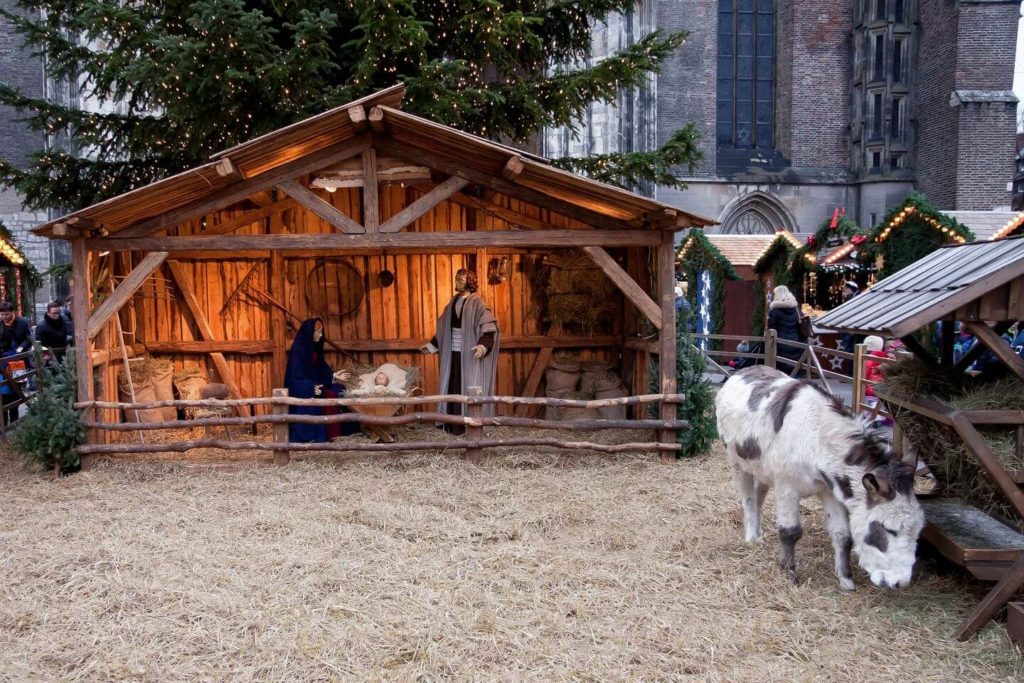
Of all the Christmas decorations, the Crèche de Noël, or the Nativity scene, is one of the most important. These are no ordinary Nativity scenes – you can find entire villages and many different figures like the butcher, baker or police officer, all built around the classic manger scene which tells the story of the birth of Jesus Christ.
The locals buy the figurines at Christmas markets and display their Nativity scene in their home until February 2nd. You can even find life-sized crèches in cities across France, or reproductions of the birth of Jesus with live actors.
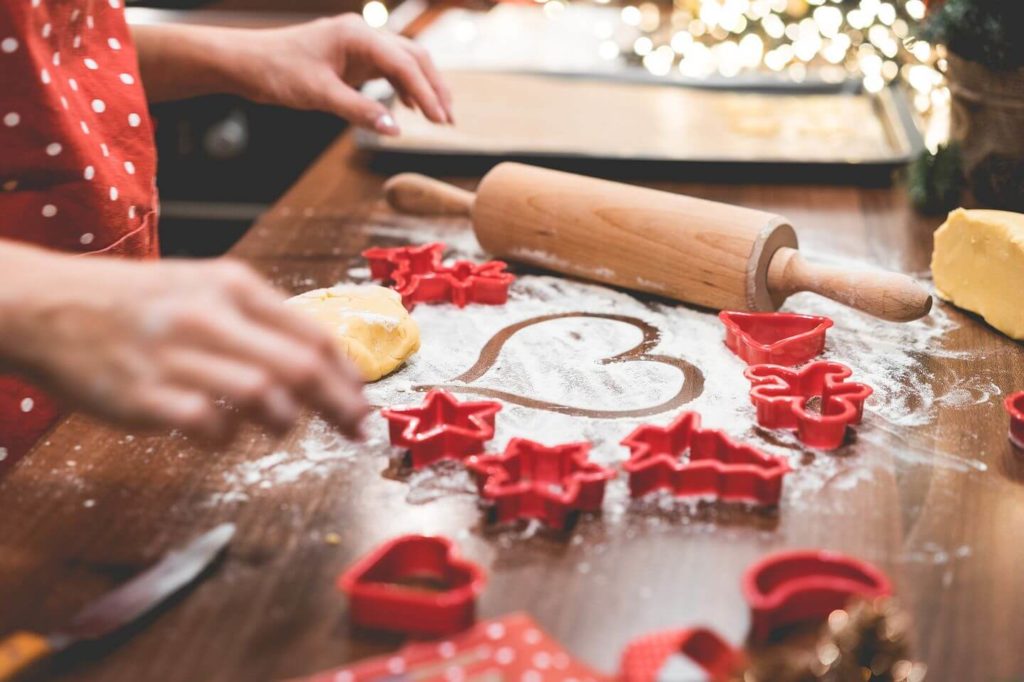
The Réveillon is one of the very best (and most delicious!) French Christmas traditions. It’s the biggest meal of the holiday season, eaten on Christmas Eve, instead of Christmas Day. The meal is usually served before or after Midnight Mass, and it’s a luxurious banquet. Imagine all the best French delicacies like foie gras, escargot, oysters, turkey, goose and capon… Yum!
If you’ve ever heard about the French custom of eating slowly and indulgently, the Réveillon is the best example. The dinner can go on for hours, with friends and family enjoying each other’s company over good food and superb wine.
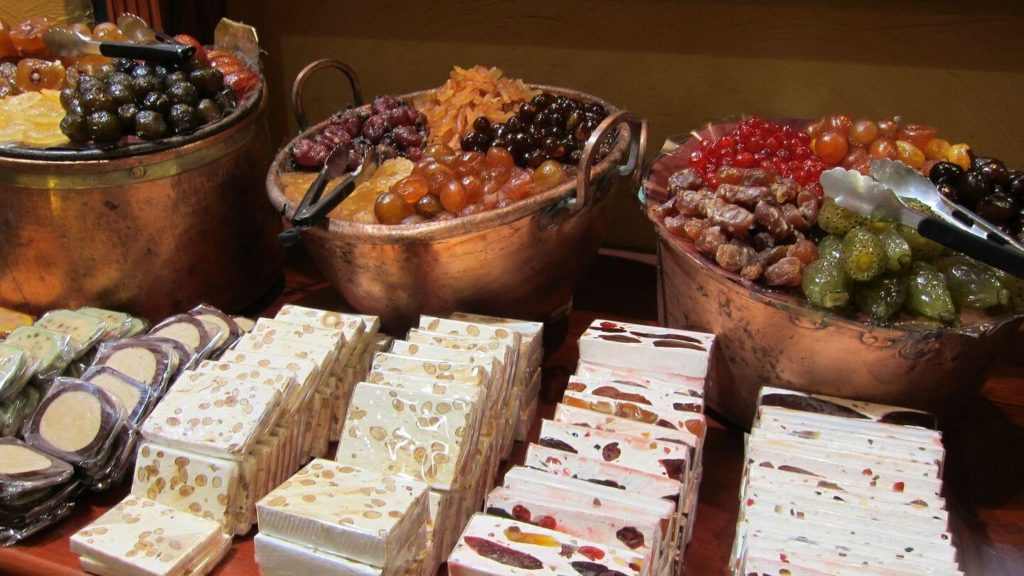
And don’t forget dessert! There are all kinds of chocolates, nougat and fruits, but the sweet star of the meal is the bûche de Noël , or the Yule log. It’s a log-shaped chocolate sponge cake that dates back to the 19th century and it’s totally delicious.
RELATED CONTENT: Christmas Desserts from Around the World
Midnight Mass
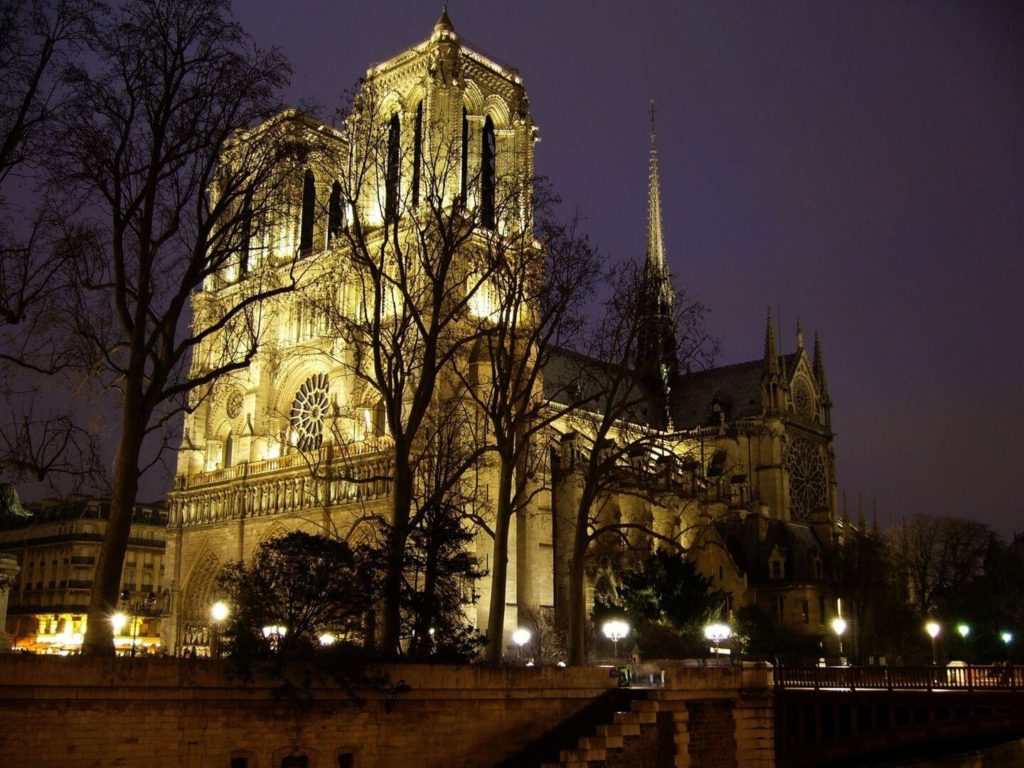
The traditional Christmas church service is held on Christmas Eve in France. It’s known as the Midnight Mass and it usually begins at midnight or a few hours before. People come together in cathedrals and churches across the country to pray and sing carols (known as Chants de Noël). They celebrate the birth of Jesus Christ, believed to have happened on that night. After the service, people return home to either sleep, eat, or open presents (for those with excited little ones).
Fête des Rois
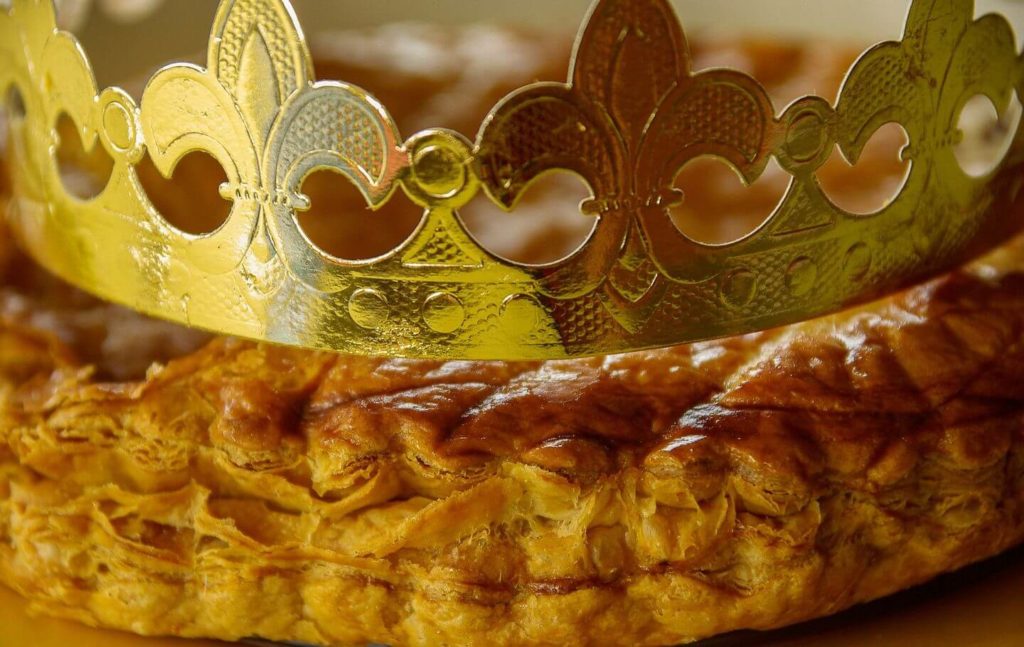
Christmas doesn’t end on December 25th in France. The official end is the Fête des Rois, or Three Kings’ Day (also known as Epiphany to Orthodox Christians). In France, this day is celebrated with the famous galette des rois, or king cake.
It’s made with almond cream-filled pastry and a fève (tiny baby figurine) is hidden inside the cake. Whoever gets the slice with the fève is crowned the king or queen for the day. Most bakeries even sell the cake with a paper crown. It brings a very sweet two weeks of festivities to an even sweeter end, and it’s a wonderful tradition to end the Christmas season.
Are you dreaming of experiencing a real French Christmas? Let us know in the comments below!
Want to hear more from us?
Sign up to receive inspiring travel articles, offers & news
" * " indicates required fields
Privacy Overview
| Cookie | Duration | Description |
|---|---|---|
| cookielawinfo-checkbox-analytics | 11 months | This cookie is set by GDPR Cookie Consent plugin. The cookie is used to store the user consent for the cookies in the category "Analytics". |
| cookielawinfo-checkbox-functional | 11 months | The cookie is set by GDPR cookie consent to record the user consent for the cookies in the category "Functional". |
| cookielawinfo-checkbox-necessary | 11 months | This cookie is set by GDPR Cookie Consent plugin. The cookies is used to store the user consent for the cookies in the category "Necessary". |
| cookielawinfo-checkbox-others | 11 months | This cookie is set by GDPR Cookie Consent plugin. The cookie is used to store the user consent for the cookies in the category "Other. |
| cookielawinfo-checkbox-performance | 11 months | This cookie is set by GDPR Cookie Consent plugin. The cookie is used to store the user consent for the cookies in the category "Performance". |
| viewed_cookie_policy | 11 months | The cookie is set by the GDPR Cookie Consent plugin and is used to store whether or not user has consented to the use of cookies. It does not store any personal data. |
Sign up for our emails (Popup)
Christmas In France - Noël's Vocabulary, Traditions and Decorations
French Christmas Decorations and Tradtitions
Tom Bonaventure / Getty Images
- Pronunciation & Conversation
- Resources For Teachers
:max_bytes(150000):strip_icc():format(webp)/camille-chevalier-karfis-French-today-bio-56a32a2c5f9b58b7d0d0afaa.jpg)
Whether you are religious or not, Christmas, Noël (pronounced “no el”) is an important holiday in France. Since the French don’t celebrate Thanksgiving , Noël is really the traditional family gathering.
Now, many things have been said about Christmas in France, and its particular traditions such as the thirteen desserts, but many of these traditions are regional, and unfortunately tend to disappear with time.
Right now, across France, here are seven traditions you could be expecting:
1. Le Sapin de Noël — The Christmas Tree
For Christmas, traditions asks that you go get a Christmas Tree “un sapin de Noël”, decorate it and set it in your house. Some people would plant theirs back in their yard. Most will just get a cut tree and throw it away when it is dry. Nowadays, many people prefer to have a synthetic tree you can fold and reuse every year. “Les décorations (f), les ornements (m)” are more or less precious but it is mostly in the US that I’ve heard the traditions of passing on ornements through generations. It is not a very common thing in France.
It's not really clear when to set up the "sapin de Noël". Some set it on Saint Nick's day (December 6th) and remove it on the 3 King Day (l'Epiphanie, January 6th).
- Le sapin de Noël - Christmas tree
- Les aiguilles de pin - pine needles
- Une branche - a branche
- Une décoration - a decoration
- Un ornement - an ornament
- Une boule - a ball / an ornament
- Une guirlande - a garland
- Une guirlande électrique - an electrical garland
- L’étoile - the star
2. La Couronne de Noël — Christmas Wreath
Another Christmas Tradition is to use wreaths on your doors, or sometimes as a table centrepiece. This wreath may be done of twigs, or of a fir branch, may have glitter, feature fir cones and if placed on a table, often surrounds a candle.
- Un centre de table - a centrepiece
- Une couronne - a wreath
- Une brindille - a twig
- Une branche de sapin - a fir branch
- Une pomme de pin - a fir cone
- Une bougie - a candle
- Une paillette - a glitter
- De la neige artificielle - artificial snow
3. Le Calendrier de l’Avent — Advent Calendar
This is a special calendar for kids, to help them count the days before Christmas. Behind each number is a door, which reveals a drawing, or a nook with a treat or a little toy. This calendar is usually hung in a communal room as to remind everybody of the countdown before Christmas (and keep an eye on the “door” openings so that the kids won’t just eat all the chocolate before Christmas...)
- Un calendrier - a calendar
- L’Avent - Advent
- Une porte - a door
- Une cachette - a hiding spot
- Une surprise - a surprise
- Un bonbon - a candy
- Un chocolat - a chocolate
4. La Crèche de Noël — The Christmas Manger & Nativity
Another important Christmas tradition in France is the nativity: a little house with Mary and Joseph, an ox and a donkey, the star and an angel, and eventually baby Jesus. The nativity set can be larger, with the 3 kings, many shepherds and sheep and other animals and village people. Some are very old and in the South of France, the little figurines are called “santons” and can be worth quite a lot of money. Some family make a paper crèche as a project for Christmas, others have a tiny little one somewhere in their house, and some churches would have a live nativity scene during the Christmas mass.
Traditionally, baby Jesus is added on December 25th in the morning, often by the youngest child of the household.
- La crèche - the manger/ nativity
- Le petit Jésus - baby Jesus
- Marie - Mary
- Joseph - Joseph
- Un ange - an angel
- Un boeuf - an ox
- Un âne - a donkey
- Une mangeoire - a manger
- Les rois mages - the 3 kings, the 3 wise men
- L’étoile du berger - the star of Bethlehem
- Un mouton - a sheep
- Un berger - a shepherd
- Un santon - manger figurines made in the South of France
5. About Santa, Shoes, Stockings, Cookies and Milk
In the old days, children would place their shoes next to the fireplace and hope to get a little present from Santa, such as an orange, a wooden toy, a little doll. Stockings are used instead in the Anglo-saxon countries.
In France, most new houses do not have a fireplace, and the tradition of placing your shoes by it has totally disappeared. Although he does bring the presents on his sleigh, in France what Santa does is not that clear: some think he comes down the chimney himself, some believe he sends a helper or just magically places the gifts on the shoes (if he is an old-fashioned Santa) or under the Christmas tree. In any case, there is no clear tradition of leaving cookies and milk for him… Maybe a bottle of Bordeaux and a toast of foie gras? Just kidding…
- Le Père Noël - Santa (or Saint Nicolas in the North-East of France)
- Le traineau - the sleigh
- Les rennes - reindeers
- Les elfes - elves
- Le Pôle Nord - North Pole
6. Christmas Cards and Greetings
It’s customary in France to send out Christmas/ Happy New Year cards to your friends and family, although this tradition is disappearing over time. If it's better to send them before Christmas, you have until January 31st to do it. Popular Christmas greetings are:
- Joyeux Noël - Merry Christmas
- Joyeuses fêtes de Noël - Merry Christmas
- Joyeuses fêtes - Happy Holidays (more Politically Correct since not Religious)
7. Les Marchés de Noël — Christmas Markets in France
Christmas Markets are little villages made up of wooden stalls (called "châlets") which pop up in the center of towns in December. They typically sell decorations, local products and "vin chaud" (mulled wine), cakes, biscuits and gingerbreads as well as many handcrafted items. Originally common in the North-East of France, they are now popular throughout France - there is a huge one on "les Champs Elysées" in Paris.
- Christmas in France: a Fun French-English Side-by-Side Story
- Saint Nick in France - an Easy French Story With English Translation
- Lyrics of the French Christmas Carol, 'Mon Beau Sapin'
- Minuit Chrétien French Christmas Carol For O Holy Night
- The Most French Famous Christmas Song: 'Petit Papa Noël'
- Simple Conjugations for the French Verb, 'Ouvrir,' Meaning 'to Open'
- Noël Nouvelet French Christmas Carol
- 'La Marseillaise' Lyrics in French and English
- French King Pie Traditions and Vocabulary
- "Bon Anniversaire": Saying Happy Birthday in French
- How to Sing 'Silent Night' in French and English (Douce Nuit)
- Celebrating New Year's Eve in France
- Halloween Traditions in France
- French Terms Related to Hanukkah and Judaism
- The February Celebration of French Candlemas ('Jour des crêpes')
- Basic Vocabulary You'll Need to Go Shopping in France

Joyeux Noël – Merry Christmas
By: Author Calli Zarpas
Posted on Published: March 1, 2022 - Last updated: June 20, 2024

The three most common ways to say Merry Christmas in French as well as happy holidays are: Joyeux Noël (Literal meaning “joyous Christmas”, pronounced ʒwajø nɔɛl), Meilleurs Voeux (Translation “Best Wishes”, pronounced mɛjœʀ vø) and bonnes fêtes (Translation “Happy Holidays”, pronounced bɔn fɛt).
Joyeux Noël
Merry Christmas

If you’ve ever considered going to France for the Christmas season, there are a few things you can do to prepare. Besides packing some warm clothes, looking up the best Christmas markets, and getting excited about drinking a little too much chocolat chaud (hot chocolate), learning how to say Merry Christmas should definitely be on your to-do list.
Ways of Saying Merry Christmas in French
The phrase you’ll see everywhere during the Christmas season is Joyeux Noël , which literally means “joyful Christmas.”
No matter where you are in France, you’re sure to see Joyeux Noël written on Christmas cards, sung in French Christmas songs , and spoken among co-workers and family members alike.
Tous mes meilleurs vœux de Noël !
If you’re writing a letter or are in a more professional setting, “ Tous mes meilleurs vœux de Noël ! ” is a nice option when wishing someone Merry Christmas. It means “all my best wishes for Christmas.”
All my best wishes for Christmas!

How to Say Happy Holidays in French
Bonnes fêtes (de fin d’année) .
After Joyeux Noël , “ Bonnes fêtes ” is the second most popular phrase you’ll hear during the Christmas season. Bonnes fêtes means “Happy Holidays.”
Bonnes fêtes (Bonnes fêtes de fin d’année) !
Happy holidays!
It’s become more and more popular over the years because it is a non-denominational way to wish someone a happy holiday season.
Although most people in France celebrate Christmas, you can never be sure when speaking with a stranger. So, if you aren’t sure if someone celebrates Christmas, it might be better to say Bonnes fêtes instead.
If you’d like another inclusive way to say Happy Holidays in French, you can also say Bonnes fêtes de fin d’année !, which means “Happy end of the year holidays.”
This can include Christmas, but also other holidays like Hanukkah , Kwanzaa, and New Year’s Eve.
P.S. If you’re looking for some interesting Christmas-related French homework, you can try your hand at this French news article , which talks more about whether to use Bonnes fêtes or Joyeux Noël .
Je vous souhaite de très joyeuses fêtes.
If you’re looking for a way to wish “happy holidays” in a more formal setting, this is a good option. Je vous souhaite de très joyeuses fêtes is a more elevated way of simply saying Bonnes fêtes. But, you could technically use this phrase with anyone.
Though, this is probably a mouthful if you’re just saying it to the cashier at the supermarket, for example.
Meilleurs vœux
Literally meaning, “best wishes,” meilleurs vœux is a nice phrase to have in your French handbook. This is another phrase you can to pretty much anyone. But, it’s mostly used with people you know like coworkers or acquaintances.
Its use is similar to how we might use “Happy Holidays” or “Season’s Greetings” in English.
Best wishes!
Advanced Ways to Say Merry Christmas in French
If you’re looking for a more advanced way to say Merry Christmas in French this is a good place to start.
You might need a more formal way to wish someone Merry Christmas in French in a variety of settings. For example, you might be writing a Christmas card, a business email, or a formal letter.
Either way, these unique and poetic ways to say Merry Christmas will work for many different situations.
Joyeuses fêtes de Noël à vous et vos proches !
Joyeuses fêtes de Noël à vous et vos proches ! means “Merry Christmas to you and your loved ones.” This phrase literally means “Joyful Christmas holidays to you and your close relations (like family members and friends).” So this is a touching way to wish someone Merry Christmas in French.
Je te souhaite de passer un merveilleux Noël plein de joie et de magie.
This is one of the most poetic ways to say Merry Christmas in French. Meaning, “I hope you have a marvelous Christmas filled with joy and magic,” this Christmas phrase would look great in most formal, written contexts.
Pour ce Noël, je te souhaite paix, amour et plein de bonheur.
Another rather poetic and unique way to say Merry Christmas in French, this means “For this Christmas, I wish you peace, love, and lots of happiness.”
Related lessons:
- French Christmas vocabulary
- French Christmas movies
References:
- WordReference
All posts by Calli Zarpas | All French Word of the Day lessons
Sharing is caring!
Calli Zarpas
Calli Zarpas, blogger, producer, and content creator, is a lover of all things travel, wellness, and French. Having begun traveling in her teens, Calli visited 30 countries before settling down in France post-college. When she's not writing French-language content for FrenchLearner or traveling the world, you can find Calli creating content for herself and others on Instagram and her blog, Wooish .
See all posts by Calli Zarpas
Talk to our experts
1800-120-456-456
Essay on Christmas

Christmas Essay in English for Students
Essay writing is an important part of the curriculum. Students are asked to write essays in the exam to check their imagination and how well they can weave their thoughts into words. Essays also evaluate a kid’s knowledge of language and grammar. Christmas is the favorite festival of many kids and writing an essay on this festival is often enjoyed by young kids. Refer to the free essay on Christmas at Vedantu’s site.
Vedantu offers free tutorials on many things such as courses of all the grades, it offers tested material of several competitive exams, and there are essays on the trending topics, festivals, and informational stuff available on the Vedantu website. For whichever topic we offer information on, we aim to turn it hassle-free for the students to get a complete list. Let’s get ready to read a detailed essay on the Christmas festival that is celebrated all over the world by people of varied beliefs and religions. Here you go:
Christmas is celebrated every year on December 25 . The festival marks the celebration of the birth anniversary of Jesus Christ . Jesus Christ is worshipped as the Messiah of God in Christian Mythology. Hence, his birthday is one of the most joyous ceremonies amongst Christians. Although the festival is mainly celebrated by the followers of Christianity, it is one of the most enjoyed festivals all over the globe. Christmas symbolizes merriment and love. It is celebrated with a lot of zeal and enthusiasm by everyone, no matter what religion they follow.
The season of Christmas that begins from Thanksgiving brings festivity and joy to everyone’s lives. Thanksgiving is the day when people thank the almighty for blessing them with harvest and also show gratitude towards all the good things and people around. On Christmas, people wish each other Merry Christmas and pray that the day takes away all the negativity and darkness from people’s life.
Christmas is a festival full of culture and tradition. The festival entails a lot of preparations. Preparations for Christmas start early for most people. Preparations for Christmas involve a lot of things including buying decorations, food items, and gifts for family members and friends. People usually wear white or red coloured outfits on the day of Christmas.
The celebration begins with decorating a Christmas tree . Christmas tree decoration and lighting are the most important part of Christmas. The Christmas tree is an artificial or real pine tree that people adorn with lights, artificial stars, toys, bells, flowers, gifts, etc. People also hide gifts for their loved ones. Traditionally, gifts are hidden in socks under the tree. It is an old belief that a saint named Santa Claus comes on the night of Christmas eve and hides presents for well-behaved kids. This imaginary figure brings a smile to everyone’s face.
Young children are especially excited about Christmas as they receive gifts and great Christmas treats. The treats include chocolates, cakes, cookies, etc. People on this day visit churches with their families and friends and light candles in front of the idol of Jesus Christ. Churches are decorated with fairy lights and candles. People also create fancy Christmas cribs and adorn them with gifts, lights, etc. Children sing Christmas carols and also perform various skits marking the celebration of the auspicious day. One of the famous Christmas carols sung by all is “Jingle Bell, Jingle Bell, Jingle all the way”.
On this day, people tell each other stories and anecdotes related to Christmas. It is believed that Jesus Christ, the son of God, came to the Earth on this day to end people’s sufferings and miseries. His visit is symbolic of goodwill and happiness and it is depicted through the visit of the wise men and the shepherds. Christmas is, indeed, a magical festival that is all about sharing joy and happiness. For this reason, it is also my most favorite festival.
Apart from the religious beliefs, the festival is known as sharing gifts with family as well as friends. The cute kids wait for the whole year to receive gifts from Santa. The craze of receiving gifts increases so much that they get up at midnight and start asking what they are going to get from Santa. They share their wishes with their parents and their parents try to accomplish them on the behalf of Santa.
The wheel of imparting knowledge to the students at Vedantu is designed in a manner that the students can grab it without facing any sort of challenge. Vedantu has designed both a website and an application considering the digital requirement of today’s era. Thus, you can either access the website or can download the application today only!
Also Check: Christmas Speech for Students in English
Christmas Essay for Kids in English
Christmas is a super-duper special day filled with laughter, twinkling lights, and the warmth of love. It's like a magical adventure where everyone gets to be a part of something incredible!
Imagine waking up on Christmas morning, and the air is filled with the sweet scent of gingerbread cookies and the sound of jingle bells. It's a day when even the snowflakes seem to dance with joy. So, what makes Christmas so special?
Firstly, let's talk about Santa Claus! He's the jolly old man with a big, white beard who lives at the North Pole. Santa and his team of reindeer travel all around the world on Christmas Eve, delivering presents to good boys and girls. Can you believe he squeezes down chimneys to leave gifts under the Christmas tree? It's like a magical game of hide-and-seek with Santa!
Now, speaking of trees, have you ever seen a Christmas tree ? They are like giant, sparkling towers of happiness. Families decorate them with shiny baubles, twinkling lights, and a sparkly star on top. It's like turning your living room into a festive wonderland!
And oh, let's not forget about the delicious Christmas dinner! Families gather around the table to enjoy a feast of roast turkey, crispy potatoes, and yummy mince pies, telling stories . It's a time for sharing and caring, just like Santa does.
Christmas is not just about gifts and decorations; it's also about spending time with family and friends. Whether you're playing in the snow, singing carols , or wrapping presents, the joy of Christmas spreads like a warm, cosy blanket.
But wait, there's more! On Christmas morning, you might find stockings hanging by the fireplace. These are special socks where Santa leaves little surprises. It's like a treasure hunt right in your own home!
In the end, Christmas is a day where kindness and joy fill the air. It's a time to be grateful for the people we love and the magical moments we share. So, let's celebrate this wonderful day with laughter, love, and a sprinkle of Christmas magic!
Merry Christmas, everyone!

FAQs on Essay on Christmas
1. Why is Christmas such a special day?
Christmas is special because it's a time of joy, love, and sharing. Families come together, and there's a magical feeling in the air. It's also when Santa Claus brings gifts to children around the world.
2. What are the key things to include in an essay about Christmas?
In your essay, make sure to talk about traditions like decorating the Christmas tree, the excitement of Santa Claus, the delicious Christmas dinner, and the joy of spending time with family and friends. Share the magic of the holiday!
3. Who is Santa Claus, and why is he important on Christmas?
Santa Claus is a jolly man with a white beard who lives at the North Pole. On Christmas Eve, he travels in a sleigh pulled by reindeer, delivering gifts to children. He brings happiness and surprises, making Christmas a time of wonder and excitement.
4. What makes a Christmas tree special, and how do families decorate it?
A Christmas tree is special because it turns your home into a festive wonderland. Families decorate it with shiny baubles, twinkling lights, and a sparkly star on top. It's a way to create a magical atmosphere and celebrate the holiday spirit.
5. Why is spending time with family and friends important during Christmas?
Christmas is not just about decorations and gifts; it's about being together with loved ones. Whether playing in the snow, singing carols, or enjoying a delicious dinner, these moments create memories and warmth. Christmas is a time to share love and happiness with those we care about.
Unconventional language hacking tips from Benny the Irish polyglot; travelling the world to learn languages to fluency and beyond!
Looking for something? Use the search field below.
Home » Articles » “Merry Christmas” in French – How to Have a “Joyeux Noël” [In-Depth Guide]
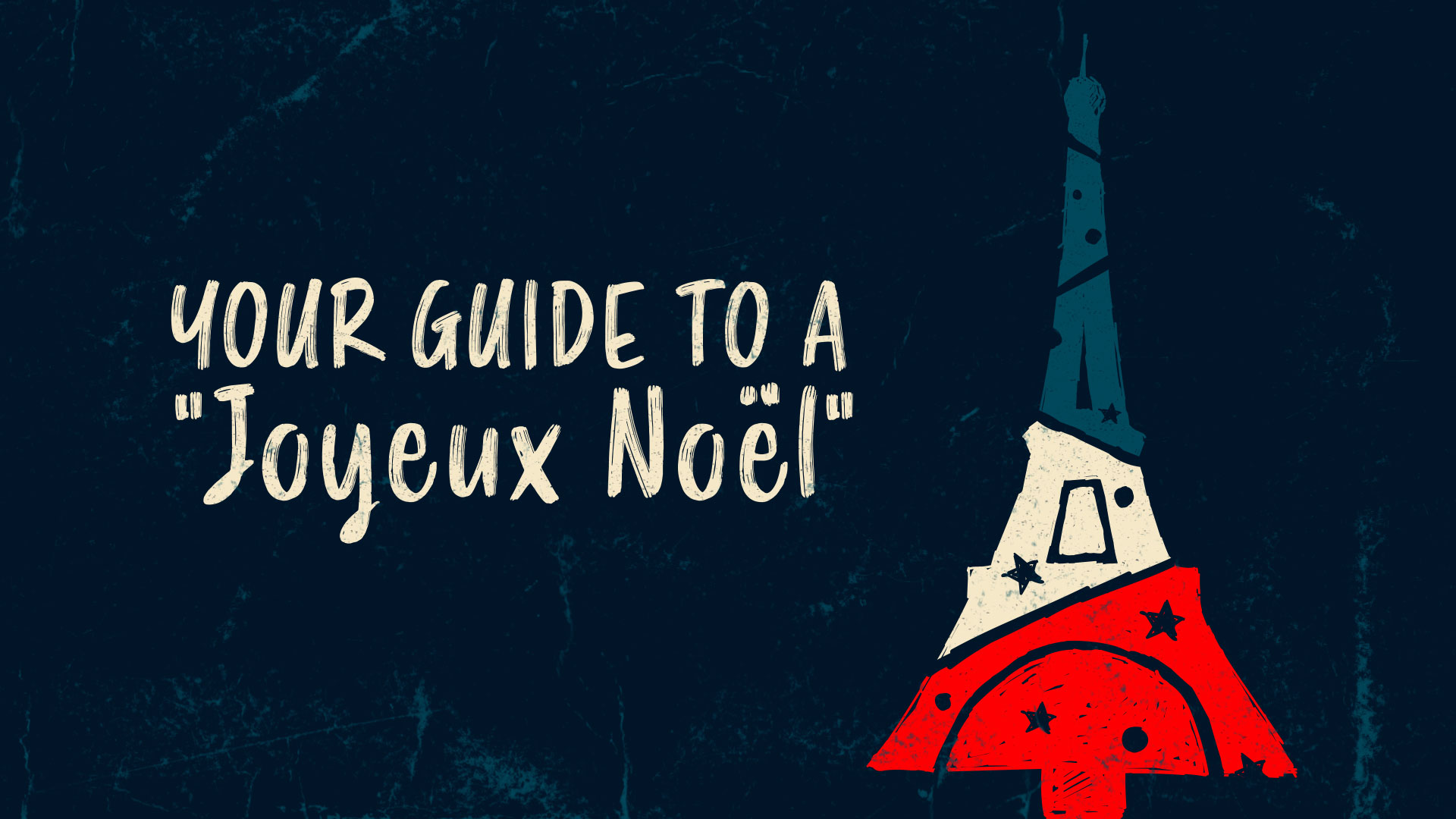
Full disclosure: This post contains affiliate links. ?
written by Alice Cimino
Language: French
Reading time: 15 minutes
Published: Dec 11, 2020
Updated: Nov 19, 2021
“Merry Christmas” in French – How to Have a “Joyeux Noël” [In-Depth Guide]
Wondering how to say “Merry Christmas” in French? Here’s the quick answer: it’s Joyeux Noël!
Not enough for you? I agree!
Twinkling lights, jolly songs, and delicious food: the end-of-year holidays are upon us! If you’re here, there’s a good chance that you’re a Christmas fan.
Well, me too! And I’m also French, so I can tell you all about how to celebrate the merriest Christmas in French!
Before we start, a question for those of you who have a sweet tooth: have you ever dreamt of baking the perfect French bûche de Noël (“Yule log”)? Then stick around until the end because I’ve included a sweet bonus for you!
Ready? Allons-y! (“Let’s go!”)
Table of contents
How to say “christmas” in french: noël, how to say “merry christmas” in french: joyeux noël, how to say “have a very merry christmas” in french: passe un très joyeux noël, how to say “i wish you a merry christmas” in french: je te souhaite un joyeux noël, how to say “merry christmas eve” in french, how to say “merry christmas and happy new year” in french: joyeux noël et bonne année, bonnes fêtes (de fin d'année) – “happy (end of year) holidays”, bonnes et heureuses fêtes – “very happy holidays”, joyeuses fêtes – “joyous holidays”, meilleurs vœux – “best wishes” or “season’s greetings”, other french greetings for the holidays, la crèche de noël – the nativity scene, le sapin de noël – the christmas tree, les souliers de noël – the christmas shoes, le père fouettard – the… whipping father, s’embrasser sous le gui – to kiss under the mistletoe, le réveillon de noël – the christmas dinner, les oranges de noël – christmas oranges, la bûche de noël – the yule log, passez un joyeux noël.
“Christmas” in French is Noël .
Noël comes from the Latin word natalis (“birth”). As you’ve probably guessed, it refers to the birth of Christ. Its first recorded use to describe Christmas comes from the 12th century.
Noël is perhaps the most famous fête de fin d’année (“end of year holiday”). It happens en Décembre (“in December”) and, in France and all countries in the northern hemisphere, en hiver (“in winter”).
Native tip: if you’re going to write the word down, don’t forget the tréma (“umlaut”). These two points above the e are important for the pronunciation of the word. Otherwise, it would sound like nél .

If “Christmas” is Noël , how do you say “Merry Christmas” in French? The answer is: Joyeux Noël! Joyeux is the masculine version of the adjective for “happy” or “merry” in French.
Are you worried about the pronunciation? Remember that the French stress the last syllable of each word: Jo yeux No ël .
How to Say “Have a Merry Christmas” in French: Passe un Joyeux Noël
Joyeux Noël is a good greeting to use in general, but there are other ways to wish a Merry Christmas. Especially to someone you won’t spend the holiday with.
Passe un joyeux Noël (“have a Merry Christmas”, literally “spend a Merry Christmas”) is perhaps the most popular among greetings for people you won’t see before after Christmas.
Native tip: Don’t forget that there are several ways to say “you” in French. Passe un joyeux Noël addresses the informal and singular “you”.
For the plural “you” or the formal singular vous , use passez un joyeux Noël .
Go the extra mile and wish your friends “have a very Merry Christmas”. Add très to the phrase you learnt above and you’re done! The result is passe/passez un très joyeux Noël .
Souhaiter in French means “to wish”. To tell someone that you wish them a Merry Christmas, say je te/vous souhaite un joyeux Noël .
You might often hear the phrase on te/vous souhaite un joyeux Noel or nous te/vous souhaitons un joyeux Noël . They both mean “we wish you a Merry Christmas”.
In France, la veille de Noël (“Christmas Eve”) is a big thing. I’ll tell you more about it below. For now, let’s focus on the words.
In French, “eve” is veille . La means “the” and de is “of”. If we were to translate the expression literally, we would get “the Eve of Christmas”.
You might also hear about la veillée de Noël . Don’t confuse the two!
Veillée means vigil . In the Christian religion, the veillée de Noël is a period of religious contemplation that comes right before the midnight Christmas Mass.
One more thing about Christmas Eve. French people often talk about le réveillon (de Noël) , and you might think they are referring to Christmas Eve. Actually, the réveillon is the dinner held quite late on Christmas or New Year’s Eve. It is part of the eve, but it’s not the Eve itself. Still, it is frequent to use it as a replacement in the case of greetings.
There isn’t really a way to wish a Merry Christmas Eve in French. You could say passe un bon réveillon , but greetings about Christmas itself are much more common.
We’ve just talked about wishing a Merry Christmas to the people you won’t spend the holiday with. If you’re talking to colleagues you won’t see before the new year, you might want to throw in a little something about that too.
“Merry Christmas and Happy New Year” is joyeux Noël et bonne année in French. The phrase literally translates to “Merry Christmas and good year”.
If you want to talk about “New Year” in French, talk about le nouvel an . That only applies if you’re talking about the celebration or January 1st, though. To talk about the coming new year, the whole 360+ days, you should use la nouvelle année .
“New Year’s Eve” is la veille du nouvel an . There is a réveillon on this night, too.
When the clock strikes midnight on December 31st, French will shout Bonne Année! (“Happy New Year, literally “Good Year”)
How to Say “Happy Holidays” in French: Bonnes Fêtes
“Merry Christmas” and “Happy New Year” aren’t the only end-of-year greetings you should know in French. Not everyone celebrates these holidays.
The fêtes de fin d’année (“end of year holidays”) include Hanoucca (“Hanukkah”), Kwanzaa , le Solstice d'hiver (“Winter Solstice”), and more. As these celebrations usually honor the concepts of love, happiness, and life, it is important to make your wishes broad and inclusive.
Here is a list of greetings you can use in any situation to wish others a great holiday season.
Bonnes fêtes in French is “happy holidays”. It is the shorter version of bonnes fêtes de fin d'année (literally “good end of year celebrations”).
Suitable for both formal and informal situations, it is commonly used in any type of communication during the holidays period. It is one of the most popular vocal greetings and you can sign your letters and emails with it!
As you’ve probably guessed, this expression is a sibling of the ones we just talked about.
The literal translation of bonnes et heureuses fêtes is “good and happy holidays”. As it is quite a long phrase, it usually belongs in letters and holiday cards.
You may recognize joyeuse from joyeux Noël . Joyeuse is the feminine version of the French adjective for “joyous” or “merry”.
Joyeuses fêtes is not exactly a modern greeting, so it is less popular than bonnes fêtes .
Like in English, the expression meilleurs vœux (“best wishes”) is a great greeting to keep close by. You could use it in any kind of situation that calls for… well, good wishes. And not only during the end of the year holidays!
Native tip: Meilleurs vœux is not used in spoken French very often anymore. It tends to appear in written texts, such as holiday cards.
Want to play it fancy? Write vœux de bonheur (“wishes of happiness”) in your cards, letters, or texts. Add pour un joyeux Noël (“for a Merry Christmas”) or pour une bonne année (“for a good year”) to be even more distinguished.
If you want to highlight the fact that Christmas is a family thing, use passez un joyeux Noël en famille (“Have a Merry Christmas with your family”).
Be polite and elegant with je vous souhaite d’excellentes fêtes (“I wish you an excellent holiday season). The phrase is even more powerful if you follow it up with et bonne année! (“and Happy New Year!”)
Some French Christmas Traditions – Let’s Pick Up Christmas Vocabulary in French
French is the official language in 29 countries. As I come from France, I will tell you about some French Christmas traditions. Let me know in the comments if you know about Christmas traditions in other French-speaking countries!
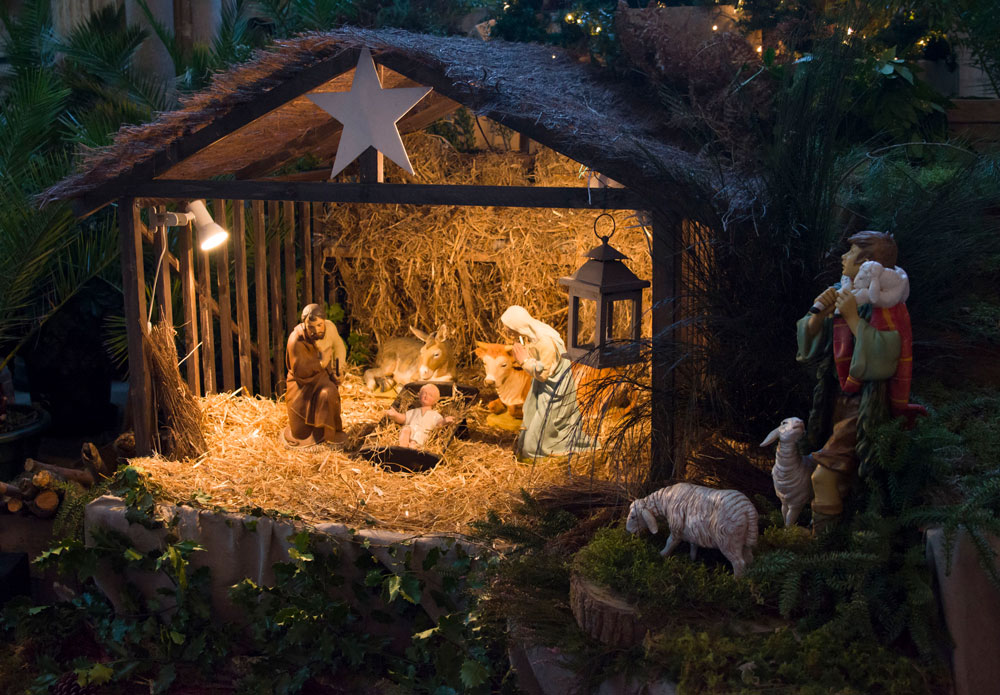
Christmas traditions are deeply rooted in French culture as Christmas is quite an important holiday in France. And since Christmas is a Christian holiday… Some of the traditions are related to the religion.
One of them is the tradition of having a crèche near the Christmas tree, or at least in the house. Religious families usually place it in the center of their home.
In today’s French, crèche is most often used as “nursery”. However the crèche is also the manger where the infant Jesus was placed after his birth in the stable. In a Christmas setting, la crèche is a miniature reconstruction of the original Christmas night as described in the Christian religion.
La Crèche de Noel usually features l’enfant Jésus (“infant Jesus”), Marie et Joseph (“Mary and “Joseph”), l’âne et le bœuf (“the donkey and the ox”), les bergers et leurs moutons (“the shepherds and their sheeps”), and les Rois Mages (“the Wise Men”). Some also have une étoile (“a star”) and des anges (“angels”).
It is common to place the infant Jesus in his manger on the 24th of Christmas.
In religiously active families, la crèche will remain up until the 2nd of February. This day is known as la Chandeleur (“Candlemas”) and we celebrate by… eating a lot of crepes!
“Oh, Alice,” you’ll say “The Christmas tree isn’t a French tradition. We have it all over the world!”
And indeed, what would Christmas be without its tree?
In French, we don’t call it a tree, but a pine. Le sapin de Noël is “the pine of Christmas”. Like anyone else, we decorate it with des guirlandes (“garlands”) and des boules de Noel (“Christmas ornaments”, literally “Christmas balls”). We might add des bougies (“candles”), des noeuds (“ribbons”), and des personnages or sujets (“Christmas characters”).
Some families wait for the 24th of December to place l’étoile or la pointe de sapin (“the tree topper”) on top of the tree. They might also wait for Christmas Eve to put les cadeaux (“the presents”) under it!
Speaking of presents… Did you know that French children leave their shoes near the tree or la cheminée (“the fireplace”) on Christmas Eve? They do so in hope that le Père Noël (“Santa Claus, literally “Father Christmas”) will fill them with gifts.
This tradition is mentioned in one of the most famous French Christmas songs for children: Petit Papa Noël (“Little Father Christmas”).
Many countries have a freaky Christmas legend. (Don’t tell me you never had nightmares about the Krampus.)
In France, the scary Christmas legend prize goes to le père fouettard (“the whipping father”). I’ll spare you the gory story of how he became a Christmas character.
He was said to follow le Père Noël and whip or spank the naughty children who didn’t deserve presents.
He is (thankfully) obsolete today, but he was a part of French Christmas traditions for a long time.
Some love something light to discuss after the grim talk.
S’embrasser sous le gui (“to kiss under the mistletoe”) is as popular in France as it is in the rest of the world when it comes to Christmas traditions.
Don’t forget! Le gui is the plant with white berries and round leaves. The red berries with pointy leaves is le houx (“holly”). There is nothing as romantic as kissing when la neige tombe dehors (“the snow is falling outside”), and you want to do it right!
As you’ve learnt earlier in this post, French people have a réveillon on Christmas Eve. It is the name they give to the late Christmas dinner shared with friends and family.
The menu often includes:
- Du foie gras
- A lot of poisson et fruits de mer (“fish and seafood”) such as des huîtres (“oysters”), du saumon (“salmon”), or des coquilles St. Jacques (“scallops”)
- Or de la volaille (“poultry”), such as de la dinde (“turkey”) or du canard (“duck”)
- Du pain d'épices (“gingerbread”)
- Des sucres d’orge pour les enfants (“candy canes for the children”)
- Du vin (“wine”) – le champagne is usually kept for New Year’s
- Des oranges (“oranges”)
Until the 1960s, French children didn’t get toys as Christmas presents. Instead, they each enjoyed… an orange!
While this type of present would probably upset today’s youth, oranges were very appreciated in the past.
Before the 1800s, oranges only grew in Spain and Italy. They were very expensive and only the wealthy could afford to eat them. When the orange trade brought its fruits to the working class, people could only buy a handful of them per year. As children didn’t get them on other occasions, it became a Christmas treat.
My Mamie (“Grandma”) talks about the Christmas oranges she received with tears in her eyes.
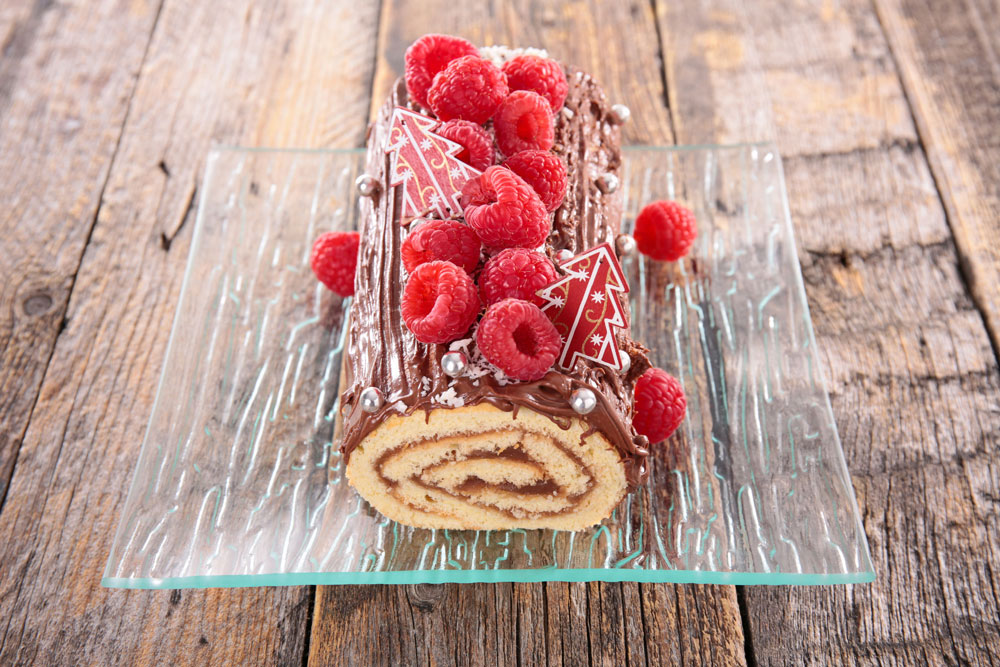
Everything is big during le réveillon de Noël , but dessert can be the biggest part. In some regions, it is traditional to eat 13 different desserts on Christmas Eve.
If you want a French Christmas dessert time but aren’t really sure you’d survive 13 courses of it, here’s some advice: bake a bûche !
The French Yule Log wasn’t originally a dessert… at the beginning, it was a real log.
In the past, families kept the biggest and sturdiest log to burn on Christmas Eve, so it would give them an opportunity to make the night go on a little longer. When fires were no longer needed for lighting, the log was too dear to leave behind. It became a dessert instead!
As promised in the introduction, here is your very French recipe for the perfect traditional bûche de Noël (for four people).
Ingredients:
- 140g powdered sugar
- 11g baking powder
- 250g chocolate
- 200g soft, unsalted butter
- Powdered sugar, dried fruits, chocolate chips… Decorations!
- Preheat the oven to 180°C.
- Cover a flat oven tray with cooking paper.
- Separate the egg yolks from the whites.
- Whip the egg yolks and the sugar with three tablespoons of warm water until foamy.
- Gradually add the flour and baking powder.
- Whisk the egg whites into snow. Gently fold them into the other mixture.
- Spread the mixture on the oven tray. It should be about 1cm thick.
- Leave in the oven for 10-15 minutes, until slightly golden.
- When out of the oven, cover the cake with a clean, humid cloth. Remove the cooking paper and roll the cake with the cloth.
- Melt the chocolate, then add the butter and stir.
- Unroll the cake, spread ⅔ of the chocolate mix on the whole surface, then roll again.
- Cover the log with the rest of the chocolate. With a fork, draw decorative lines that will make the cake look like a log.
- Sprinkle it with powdered sugar, dried fruits, chocolate chips… Decorating the *bûche* is an art!
- Leave in the fridge for a couple of hours.
Ta-da! You are ready to spend a very French Christmas!
To have even more magical holidays, you might want to discover Christmas traditions in other cultures. Discover how to say “Merry Christmas” in German, or in 11 other languages, with this great post by Shannon .
Bonnes fêtes!

Alice Cimino
Student, Freelance Content Creator
Alice is an undergraduate student who loves fiction, languages, and challenges. She's a bilingual by birth and a quadrilingual by consequence .
Speaks: French, Italian, Spanish, English
Have a 15-minute conversation in your new language after 90 days
How the French Do Christmas
With smaller trees, more champagne, and a focus on adult fun

My first true Christmas in France, 12 years ago, almost didn’t happen. The day before flying to meet my fiancée in Paris, I’d gone to a Walgreens near my parents’ house in central New Jersey to get a flu shot. Though I trust the science, and had been assured this was impossible, within 24 hours of getting jabbed I was convulsing on my mother’s couch with one of the severest fevers and respiratory infections I had ever experienced. I missed my flight and had to purchase a new ticket at the last minute. My trip was off to a painful start.
Once on the other side, however, and ensconced in front of the fire at my future sister-in-law’s apartment, I was inducted into a familiar yet subtly and pleasantly altered yuletide universe. I know that Americans who write positively about France are inevitably accused of pretension, privilege, or both. But given the ubiquity and overwhelming cultural force of the American style of Christmas, the comparison seems worth making. The French have figured out some things about the holiday—perhaps most important is that it’s all right for adults to put their pleasures first.
What struck me that inaugural year was the shape and appearance of the Christmas tree itself. In France, and perhaps Paris especially, the trees are significantly more compact than the towering North American varieties, and they tend to blend into rather than dominate their surroundings. These trees are indispensable yet understated, striking a simple balance with regular life instead of wholly upending it. (They are also—and this is no small thing—much easier to dispose of when the season is finished.) The second point of departure, and perhaps the most irreproachable, is the omnipresence of champagne, which begins flowing on Christmas Eve and—if you’re in the right company—continues from late morning into the afternoon and evening of Christmas Day.
Read: Families’ weird holiday traditions, illustrated
But it is the centrality of Christmas Eve itself—and the age-specific pleasures it promises—that I’ve come to appreciate as the main distinction between the French and American traditions. With the large caveat that I have never been part of a churchgoing community that attends services in either country, in the anecdotal terms of a secular celebrant, in France, December 24 is for adults ; the children must patiently wait longer.
I may be selling my brother and myself and every other American child we ever associated with short, but I cannot say with a straight face that we displayed anything like patience in the countdown to Christmas morning, when we would inevitably wake up at dawn. Exuberance, yes; hilarity, excitement, sure. But patience? Or associated qualities like discipline? Selflessness? Grace? A sense of the bigger picture? That is not how I remember it.
Christmas Eve was just a faint prelude, the highlight of which was virgin eggnog and the knowledge that we were now on vacation. My parents would never have been able to exchange gifts with each other in front of us, let alone invite a bunch of other adults over to do it en masse as we quietly witnessed their jubilation and even assisted in the distribution of their bounty without partaking in it.
Yet this is precisely what the French children I’ve been around are expected to do without question. On Christmas Eve, in my experience, French children are supposed to be sage . That means well behaved, but also wise. They are expected to comport themselves with restraint and good humor.
Food takes precedence over their desires and fantasies. There is the aforementioned champagne, and typically foie gras and oysters and smoked salmon and, when my mother-in-law cooks, a turkey or capon that she wraps in lard and stuffs with farce, served with mounds of baked apples and chestnuts and a light celery purée. For dessert, there is the Gallic take on the familiar log, or bûche de Noël . The kids who are older than toddlers eat the same complicated flavors as the adults. Afterward, they calmly help pass out the gifts their parents and grandparents and aunts and uncles have bought for one another. The first few years I witnessed this, I could hardly process the self-denial on display. I suppose I shouldn’t compare young people too explicitly to animals, but when I see this ritual play out, I think of a well-trained dog looking on impassively while a family devours a juicy steak in front of it. It’s impressive. Of course some French families must do things differently, but I’m speaking from personal observation.
Read: 16 decades of Atlantic Christmases
Even more alarming, when the evening is finished, when the grown-ups have had their fill, everyone simply goes to bed. The older brothers and sisters leave carrots for the reindeer and a cup of lukewarm coffee for Père Noël, mostly to humor their younger siblings who still believe in fairy tales. Then they all shut their eyes at a reasonable hour—something my brother and I never managed to accomplish in our time. In the morning, they wake up and finally open their own presents as the adults watch well-rested. The remainder of the day revolves around a large, multicourse lunch that begins with aperitifs and sets the pace for dinner. The kids continue to play, but the adults and their appetites are fully back in the driver’s seat.
It is a quiet, family-oriented celebration, but it has always felt anticlimactic to me, the way New Year’s Day does. There is already a whiff of nostalgia.
Which is probably why it is on the 25th of December that I most long for the informality and playfulness of America—the mess of torn wrapping paper and children running wild to the sound of blaring music and video games or the Chicago Bulls or Golden State Warriors (or whoever is the team of the era) beaming from the entertainment system. My son and daughter, born and raised in France, have no genuine point of comparison and are loyal to and fulfilled by their more muted French customs, and I am happy that they are happy. They certainly have all manner of advantages my neighbors and I could not have even dreamed of, including gobs of time off in a society that both prioritizes and subsidizes vacations to the tune of two weeks off every six weeks and another two months in the summer. They do not need my sympathy.
But as I sip my glass of cold champagne with their grandfather and watch them from my seat in front of the fire, I remember the sleepless, child-centric Christmases of my youth and can’t help but feel like I got away with something.
- Share full article
Advertisement
Supported by
David French
Clarence Thomas and John Roberts Are at a Fork in the Road

By David French
Opinion Columnist
Two years ago, when the Supreme Court decided New York State Rifle and Pistol Association Inc. v. Bruen , it created a jurisprudential mess that scrambled American gun laws. On Friday not only did the cleanup begin, but the Supreme Court also cleared the way for one of the most promising legal innovations for preventing gun violence: red flag laws.
The Bruen ruling did two things. First, it rendered a sensible and, in my view, correct decision that the “right of the people to keep and bear arms,” as articulated in the Second Amendment, includes a right to bear arms outside the home for self-defense. But the right isn’t unlimited. As Justice Brett Kavanaugh wrote in his concurrence in Bruen, the court did not “prohibit states from imposing licensing requirements for carrying a handgun for self-defense” and that “properly interpreted, the Second Amendment allows a ‘variety’ of gun regulations.”
At the same time, the court articulated a “text, history and tradition” test for evaluating gun restrictions in future federal cases. Under this test, gun control measures were constitutional only if the government could demonstrate those restrictions were “consistent with the nation’s historical tradition of firearm regulation.” That was the most significant element of the Bruen case. Before Bruen, lower courts had struggled to establish a uniform legal test for evaluating gun restrictions, and the Supreme Court hadn’t provided any clarity.
Justice Clarence Thomas wrote the majority opinion in a 6-to-3 decision split along ideological lines. He applied the text, history and tradition test by walking through the very complex, often contradictory, history of American gun laws to determine whether New York’s restrictions had analogies with the colonial period or the periods after ratification of the Second Amendment and the Fourteenth Amendment, which applied the Second Amendment to the states. Under a fair reading of Thomas’s opinion, lower courts would be hard pressed to uphold any gun restriction unless they could point to an obvious historical match.
Not only was the history messy, but judicial reliance on founding-era legislation suffers from an additional conceptual flaw: State legislatures are hardly stuffed with constitutional scholars. Then and now, our state legislatures are prone to enact wildly unconstitutional legislation.
Our courts exist in part to check legislatures when they go astray. The courts do not rely on legislatures to establish constitutional doctrine. In our divided system of government, legislators are not tasked with interpreting constitutional law. Yes, they should take the Constitution into account when they draft laws, but the laws they draft aren’t precedent. They do not and should not bind the courts.
We are having trouble retrieving the article content.
Please enable JavaScript in your browser settings.
Thank you for your patience while we verify access. If you are in Reader mode please exit and log into your Times account, or subscribe for all of The Times.
Thank you for your patience while we verify access.
Already a subscriber? Log in .
Want all of The Times? Subscribe .

COMMENTS
Christmas in France is an important holiday. It's a religious holiday of course, since traditionally France is a Catholic country, but it's also a family holiday: December 25 is a national holiday when everything is closed. Comme dans le reste du monde, les Français se réunissent en famille autour du sapin de Noël, et souvent d'une petite ...
The 13 Christmas desserts from Provence. In Provence, the tradition is to have 13 desserts for Christmas, there are … des noix - nuts; des figues séchées - dried figs; des raisins secs - sultanas; des dattes - dates; de la pâte de coing - quince paste; divers fruits confits - candied fruits; une fougasse - the French equivalent of Italian focaccia bread
Christmas in France is made special with the multitude of Christmas illuminations and traditions found throughout the country. From the end of November, the cities and towns of France transform into a magical wonderland with all the Christmas lights. In Paris or in Alsace, this is time for "ooh" and "ahh" at the Christmas light displays ...
Christmas crackers aren't pulled at French Christmas meals. Many French people visit a circus during the Christmas period. The Christmas tree is the main form of Christmas decoration in most houses. Traditionally, they were decorated with apples, ribbons and paper flowers. Although the custom of decorating trees in France at Christmas time ...
Noël en France - Christmas in France. Written by Qualified French Expert Aurélie Drouard HKH, Licence d'anglais LLCE. In: Reading B1, Celebrations & Important Dates, Listening or Seeing B1. Discussion of this reading exercise: 22. How is Christmas celebrated in France?
The Christmas meal in France is called " Le Réveillon de Noël " and traditionally used to be held late in the night on December 24th, as people return from the midnight mass. But, things change and now, many French families have their traditional Christmas meal on December 25th, or earlier in the day on the 24th.
The French Traditions of Christmas start with Advent. The Christmas Tree in France. From Saint Nicolas to Père Noël. The Christmas Presents. The Nativity scene. Christmas Eve in France. The Midnight Mass. French Carols. The French Christmas markets.
Noël/ Christmas. I've always found the word Noël a bit of an enigma.Compared to it's nearby European neighbors, Noël doesn't say much at all.The English word Christmas is pretty self-explanatory (as are the Spanish Feliz Navidad / Joyous (or Happy) birth and German Frohe (or Fröhliche) Weihnachten / Merry (or Joyful) Holy Night). To answer my question I started where I often do, on ...
Some popular French Christmas activities are: Passer Noël en famille — to spend Christmas with your family. Envoyer ses voeux de Noël — to send out Christmas wishes. Écrire une lettre au ...
Learn everything you need to know about Christmas in France! https://goo.gl/ckE96o Download TONS of FREE PDF lessons to learn French twice as fast! ↓ Check H...
Just press the sound icon, listen and repeat. Or if your child wants to wish someone a happy new year and a merry Christmas in French at the same time, they can say 'joyeuses fêtes', which means merry holidays. If you want a more formal greeting to say merry Christmas in French, you can use 'Je vous souhaite d'excellentes fêtes de fin ...
Here are more useful French Christmas terms: Noël (Proper name, so usually used without an article, although masculine) = Christmas. La veille de Noël - Christmas Eve (don't mistake "veille": eve, only one "i", with "vieille": feminine adjective for old, two "i") Le jour de Noël - Christmas day. Passer Noël en famille ...
Christmas Conversation in French - The French Christmas Meal. Camille. Et puis c'est le 25 qu'on fait notre réveillon: on se met sur son 31, on mange du foie gras, des huîtres, du saumon fumé, une dinde aux marrons ou un jambon cuit, et en dessert, une bûche de Noël. Et bien sûr, on boit du bon vin et du champagne.
With Christmas approaching, I'd help you improve your spoken French fluency with useful French scripts about the holiday season. C'est parti! Index:Dialogue 1: Préparer Noël - Christmas preparationsDialogue 2: Les traditions locales - Local traditionsDialogue 3: Noël en famille - Christmas in the familyDialogue 4: Les films et ...
Christmas day - 24th and 25th December. Until Christmas Day, the French town was in a magnificent festive mood, but it changes a lot on the day. On the 24th, all shops close earlier than usual, and French people go back home. Then the next day, the town becomes completely calm as if it is enchanted or a silent movie.
The Marchés de Noel, or Christmas Markets, are one of the very best parts of a French Christmas. They're found all over the country from Paris to Nice and Provence to Normandy. The biggest Christmas market is held in Strasbourg in the Alsace region and the very first French Christmas market actually originated in Alsace in 1570. They've ...
Some set it on Saint Nick's day (December 6th) and remove it on the 3 King Day (l'Epiphanie, January 6th). Le sapin de Noël - Christmas tree. Les aiguilles de pin - pine needles. Une branche - a branche. Une décoration - a decoration. Un ornement - an ornament. Une boule - a ball / an ornament. Une guirlande - a garland.
Paris Christmas Market. Daniel Schoenen/LOOK-foto/Getty Images. By Camille Chevalier-Karfis. Updated on June 20, 2019. Test your comprehension of French with this side-by-side French-English translation about Christmas. It is an easy story to help you learn French in context. Christmas Is 'Noël' in France . Noël est une fête importante en ...
The three most common ways to say Merry Christmas in French as well as happy holidays are: Joyeux Noël (Literal meaning "joyous Christmas", pronounced ʒwajø nɔɛl), Meilleurs Voeux (Translation "Best Wishes", pronounced mɛjœʀ vø) and bonnes fêtes (Translation "Happy Holidays", pronounced bɔn fɛt). Joyeux Noël. Merry Christmas
Essay on Christmas. Christmas is celebrated every year on December 25. The festival marks the celebration of the birth anniversary of Jesus Christ. Jesus Christ is worshipped as the Messiah of God in Christian Mythology. Hence, his birthday is one of the most joyous ceremonies amongst Christians.
How to Say "Christmas" in French: Noël "Christmas" in French is Noël. Noël comes from the Latin word natalis ("birth"). As you've probably guessed, it refers to the birth of Christ. Its first recorded use to describe Christmas comes from the 12th century. Noël is perhaps the most famous fête de fin d'année ("end of year ...
The Christmas Holiday. The Christmas Holiday in our home. May‚ 29th‚ 2012 If someone was to simply ask what their favorite holiday of the year is‚ they would expect Christmas to be the answer. For most of the people who have the pleasure of being able to celebrate this holiday ‚ they would usually agree. In my family‚ this would ...
The Atlantic. December 24, 2022. My first true Christmas in France, 12 years ago, almost didn't happen. The day before flying to meet my fiancée in Paris, I'd gone to a Walgreens near my ...
David French is an Opinion columnist, writing about law, culture, religion and armed conflict. He is a veteran of Operation Iraqi Freedom and a former constitutional litigator.
David French is an Opinion columnist, writing about law, culture, religion and armed conflict. He is a veteran of Operation Iraqi Freedom and a former constitutional litigator.